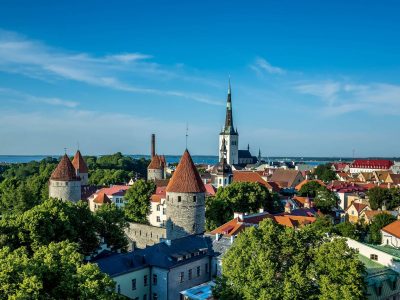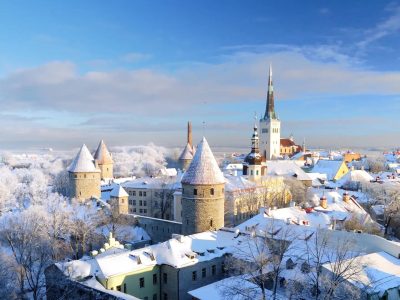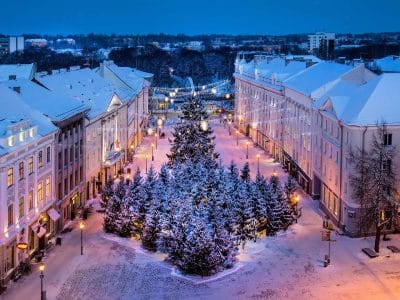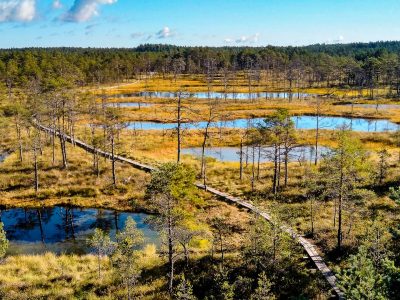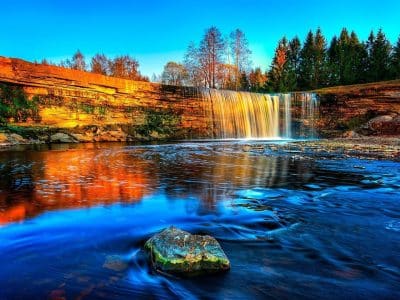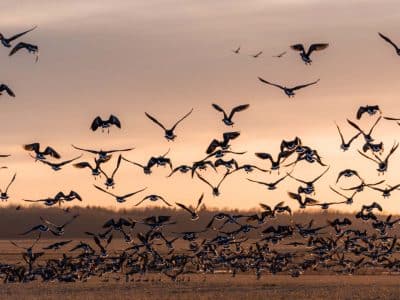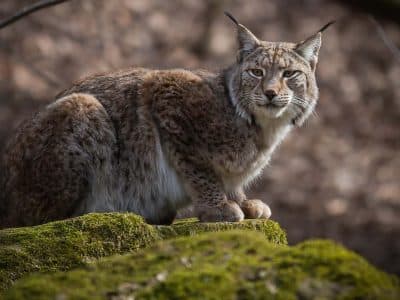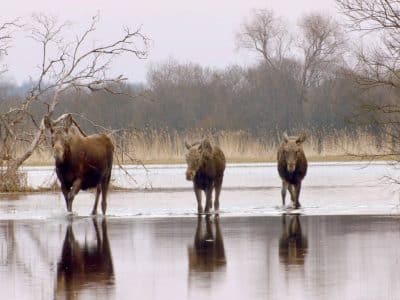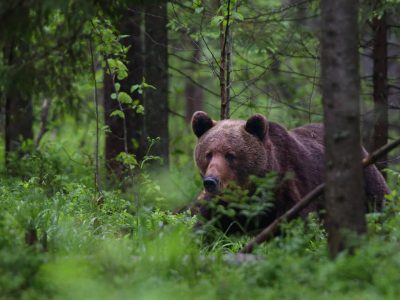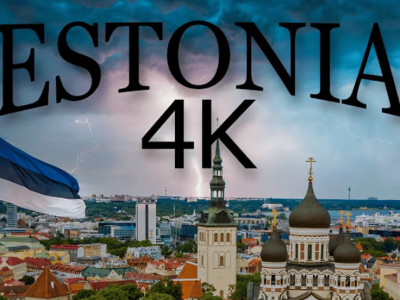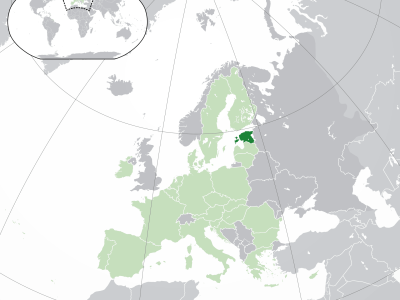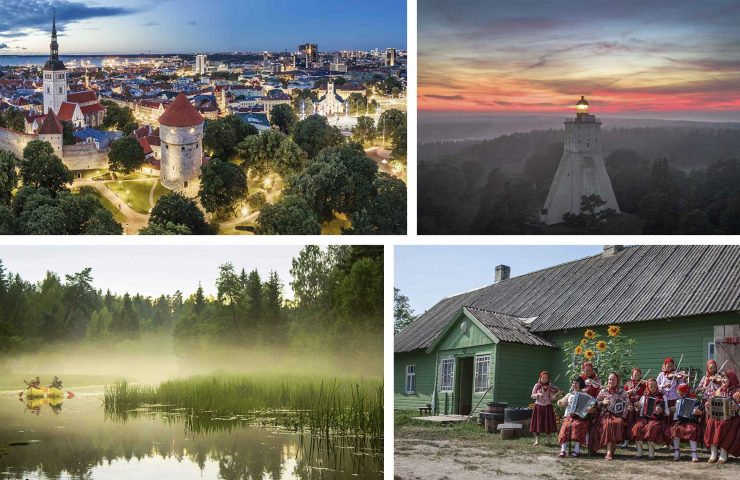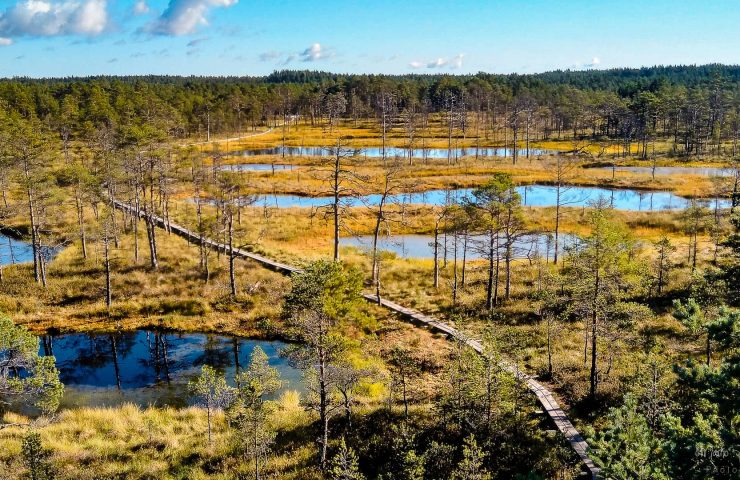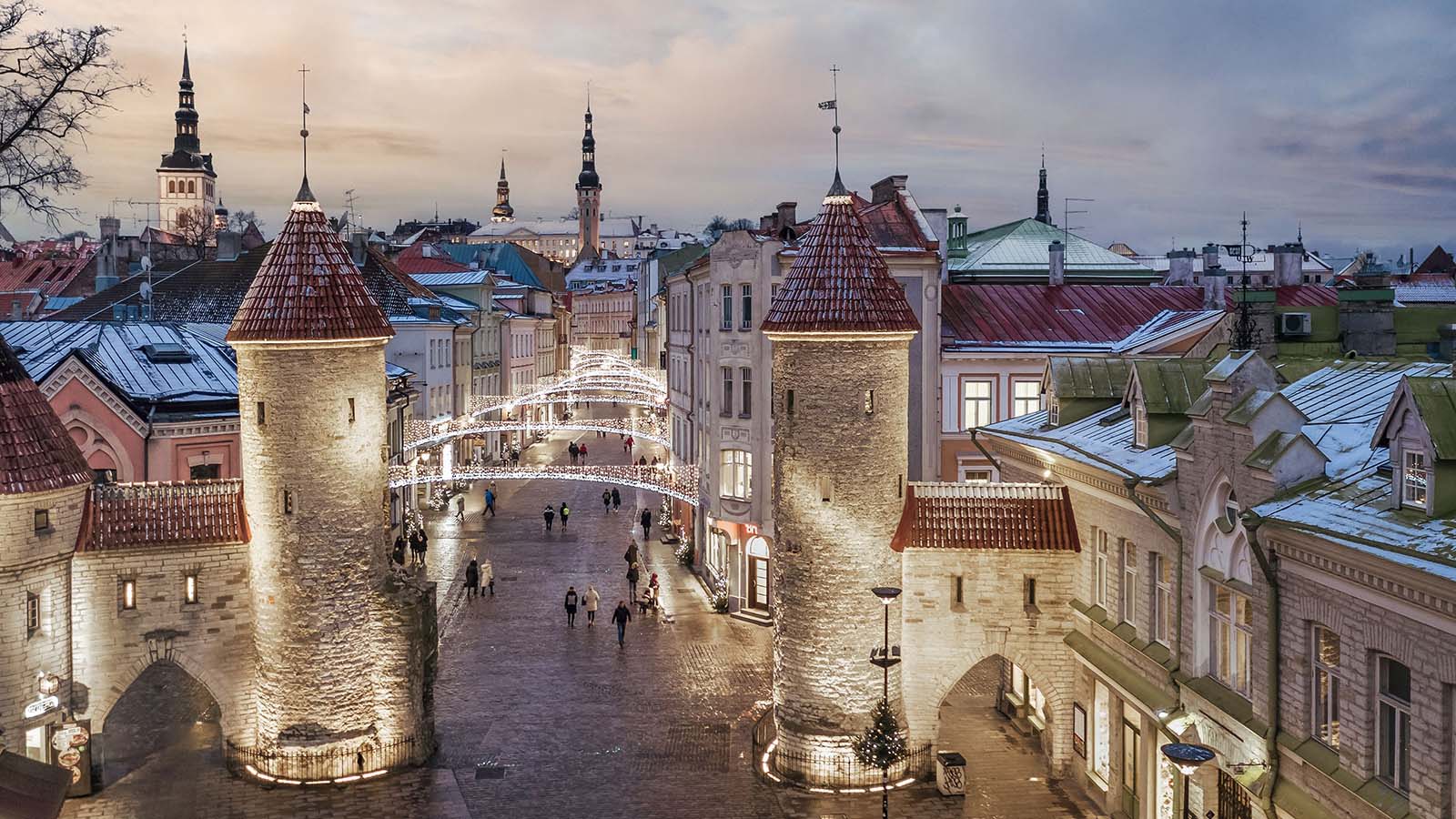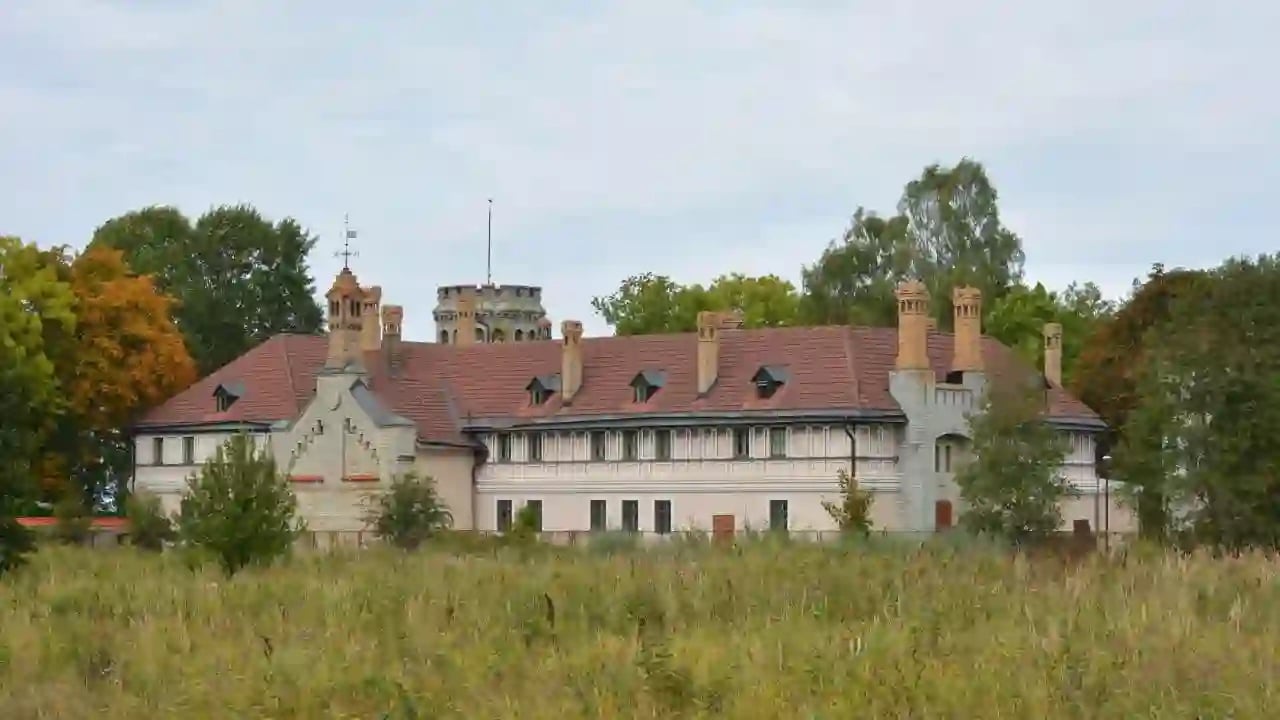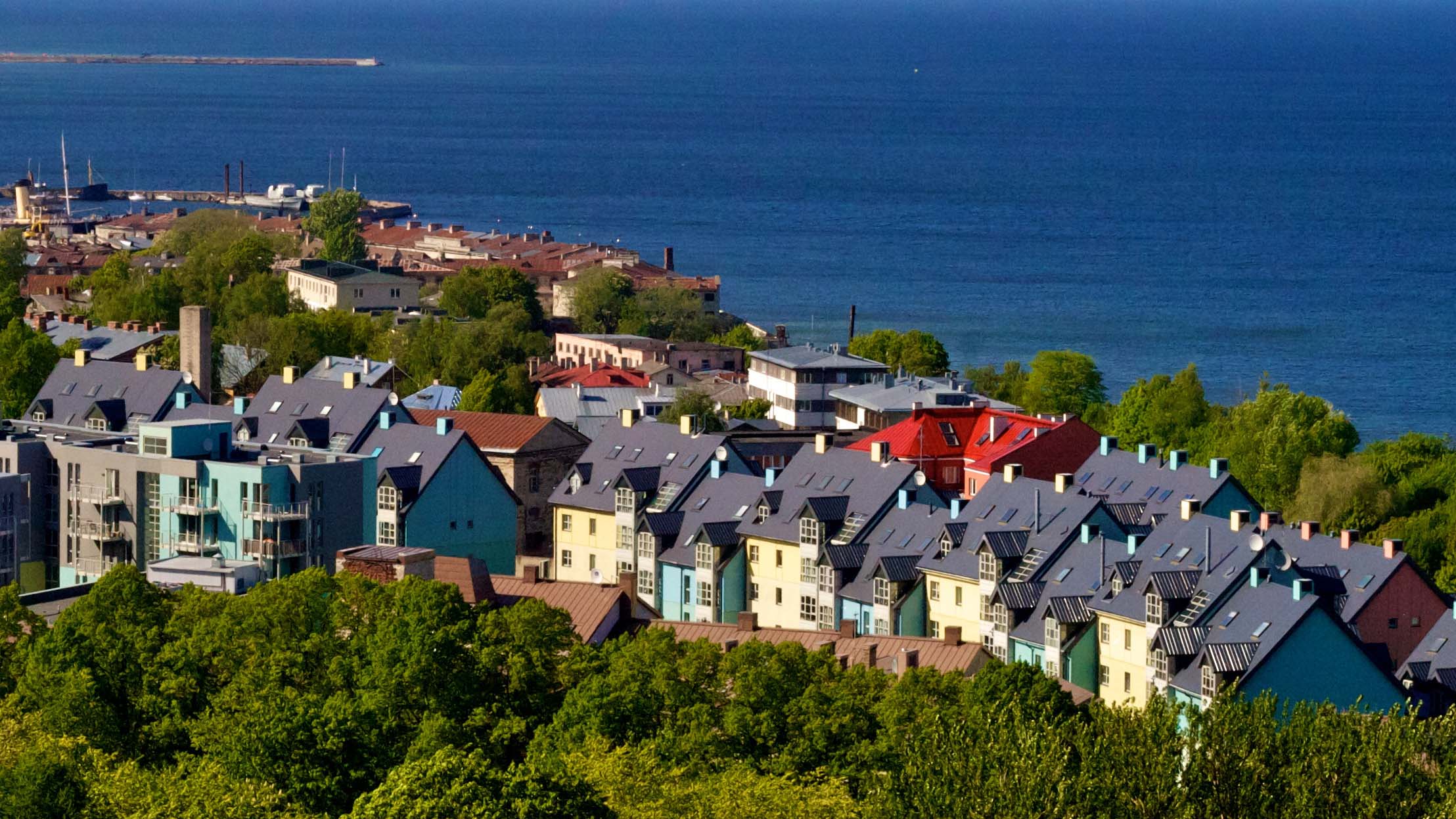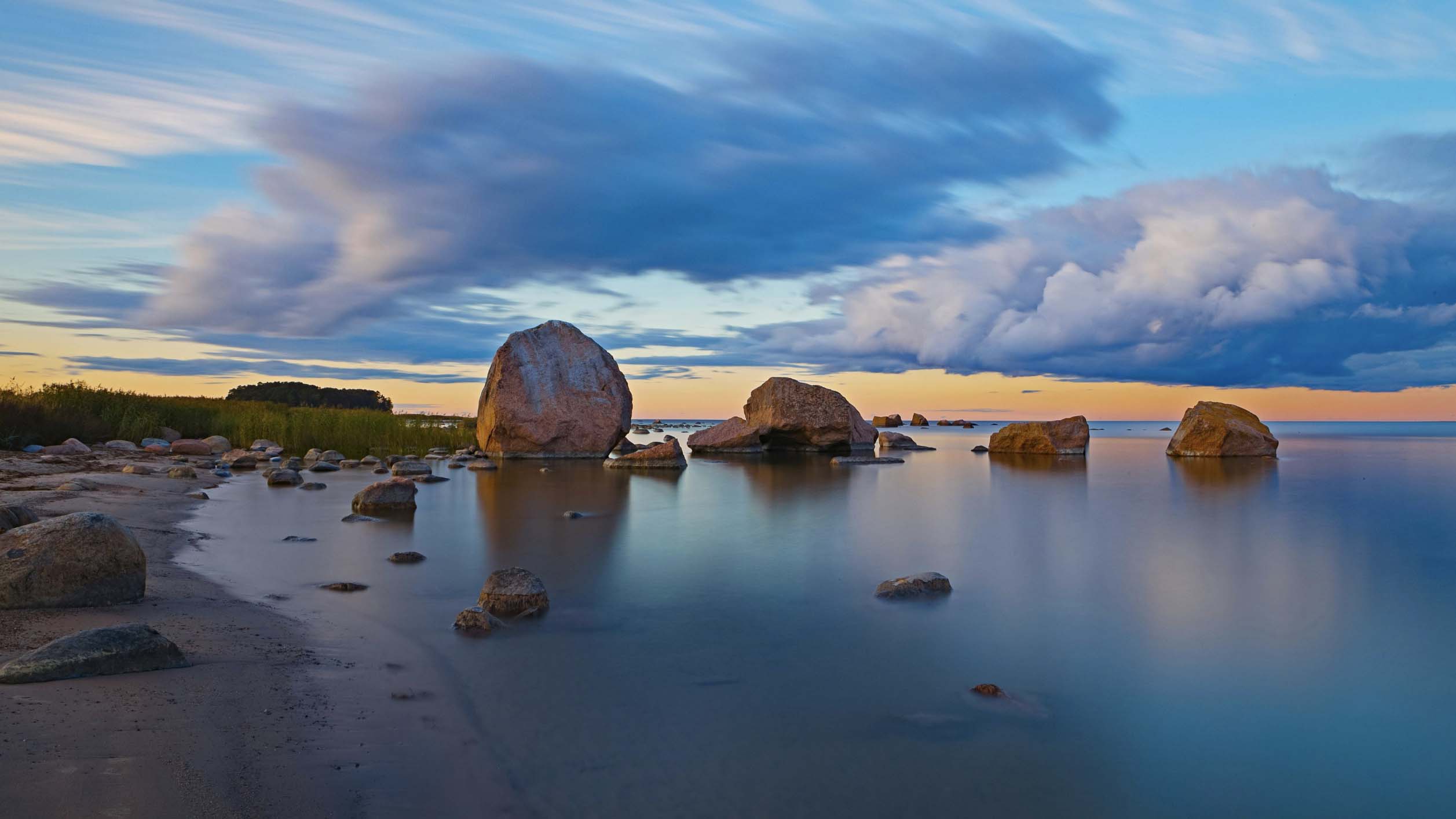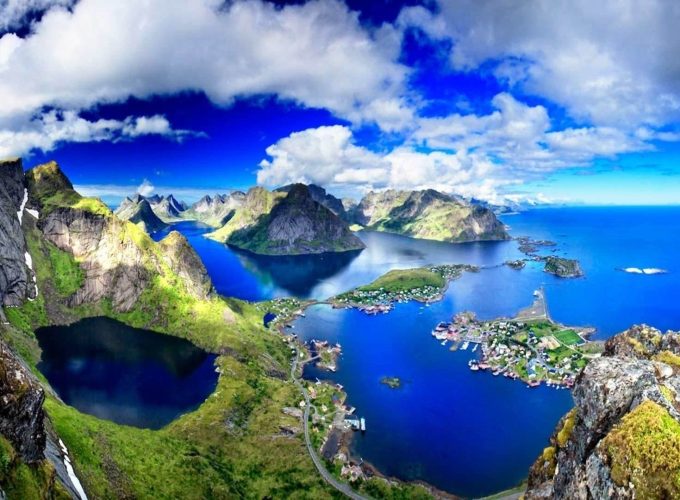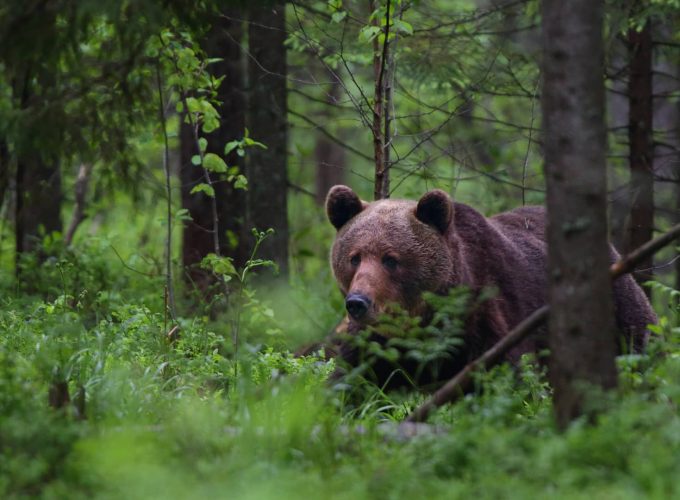A vacation in Estonia is ideal for those who love natural landscapes and history, perfect for young people, thanks to the various festivals that enliven the country during the summer, and for those who are passionate about outdoor experience and bear watching.
Best time to go
The ideal time for a trip to the Baltic Republics is late spring, between May and June, when the days are long, temperatures are acceptable and rainfall is at a minimum.
High season
July-August.
Weather
Best weather from June to August. Short cold days from November to February.
- Rich History and Culture
- Natural Beauty with great bear watching
- Excellent wildlife photography
- Affordability
- Friendly Locals
- Unique Cuisine
- Long winters and short summers
- Limited Public Transportation in rural areas
- English seldom spoken in rural areas
- Possible tourist crowds in peak season
MAIN CITIES AND TOWNS
Every visit to Estonia should start in its capital, Tallinn. Tallinn is a small medieval city that is extremely liveable.
Some call it ‘Tallinn in miniature’, and it does bear a slight resemblance. Tartu is a small town in the centre of Estonia.
Kuressaare, the capital of Saaremea Island, is a medieval town whose castle is on the tentative list to become a UNESCO World Heritage Site.
Narva is a small town located right on the border with Russia. The river separates the two countries, and the riverfront is in fact the most beautiful part of the city.
NATIONAL PARKS AND NATURE RESERVES
While Tallinn, the capital, is a destination with old-world charm, the great outdoors in Estonia is a dream come true for nature lovers. Distinguished by 1,000 islands that make it picture-perfect, from picturesque beaches to adventurous life, Estonia is the perfect destination for those seeking a break from the usual boring routine. Immersed in primeval forests and woods, it is the ideal place for those in search of nature and the soul in all its glorious splendour. Estonia’s six national parks are home to an incredible variety of wildlife, including all of the continent’s large predators and numerous bird species.
WILDLIFE
Estonia is home to fauna typical of northern Europe and is affected by impressive bird migration phenomena with the spring thaw. It has a remarkable variety of brown bears and is one of the places where you are most likely to spot a lynx. No wonder it is one of the most popular destinations for nature photographers.
TRAVEL EXPERIENCES
Apart from visiting Tallinn, Estonia offers numerous opportunities for outdoor experiences, from nature photography to canoeing, bird and bear watching, snowshoeing in winter and trekking in summer.
CLIMATE AND WEATHER
The climate in Estonia is sub-continental and, more generally, temperate and cold (with cold winters and relatively warm summers). All in all, the Estonian climate is less varied than that of neighboring countries such as Finland and Sweden: in fact, the average temperature isotherms of the coldest month (usually February) are everywhere between -3 and -7 °C, with very short days in winter and the sky remaining uniformly gray for long periods.
INSIGHTS & BLOG
27 Mar 2025
08 Jun 2025
Main cities and towns of Estonia
Estonia, where you realize that fairytale cities are anything but fiction.
TALLINN
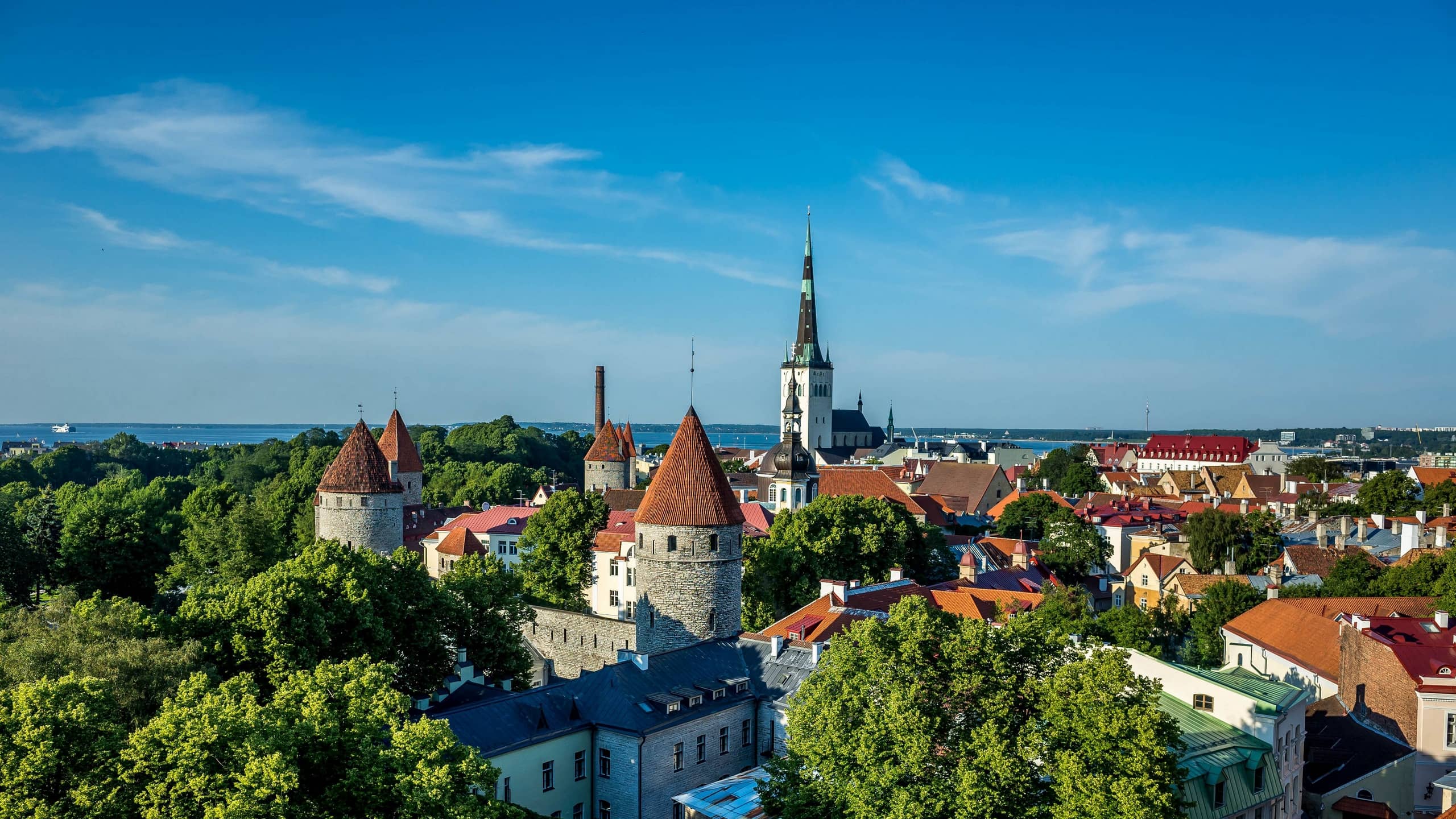
Tallinn’s fame is mainly linked to its charming medieval old town, considered one of the best preserved in all of Northern Europe. Its narrow cobbled streets, ancient churches and imposing historic walls create a unique atmosphere, perfect for a visit.
TARTU
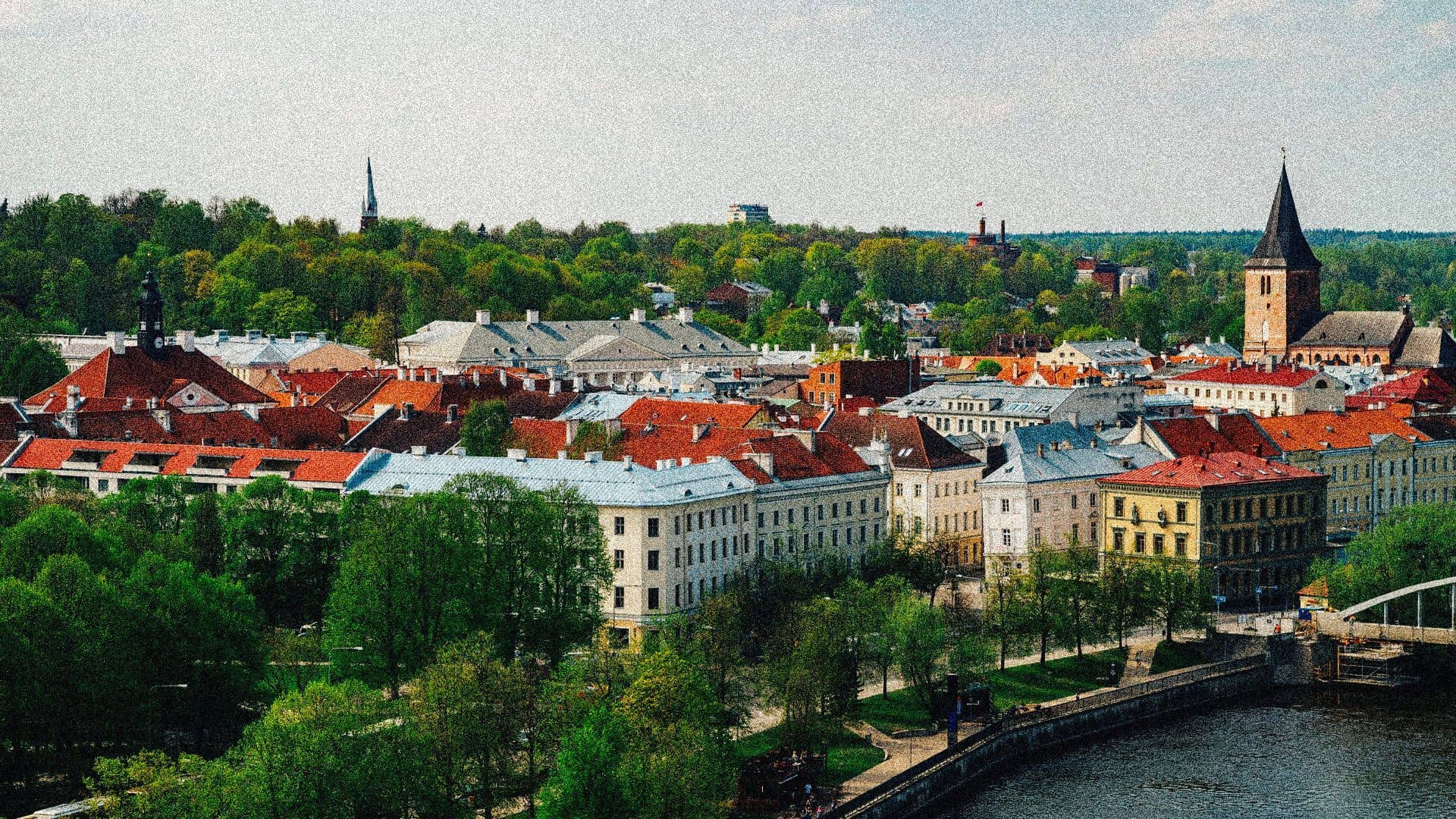
Tartu, the university city rich in history and charm, offers a unique experience to its visitors. From the ancient university, symbol of the Estonian national renaissance, to the museums that tell the story of its glorious past, the city of Tartu offers tourists and others a unique and fascinating experience.
PARNU
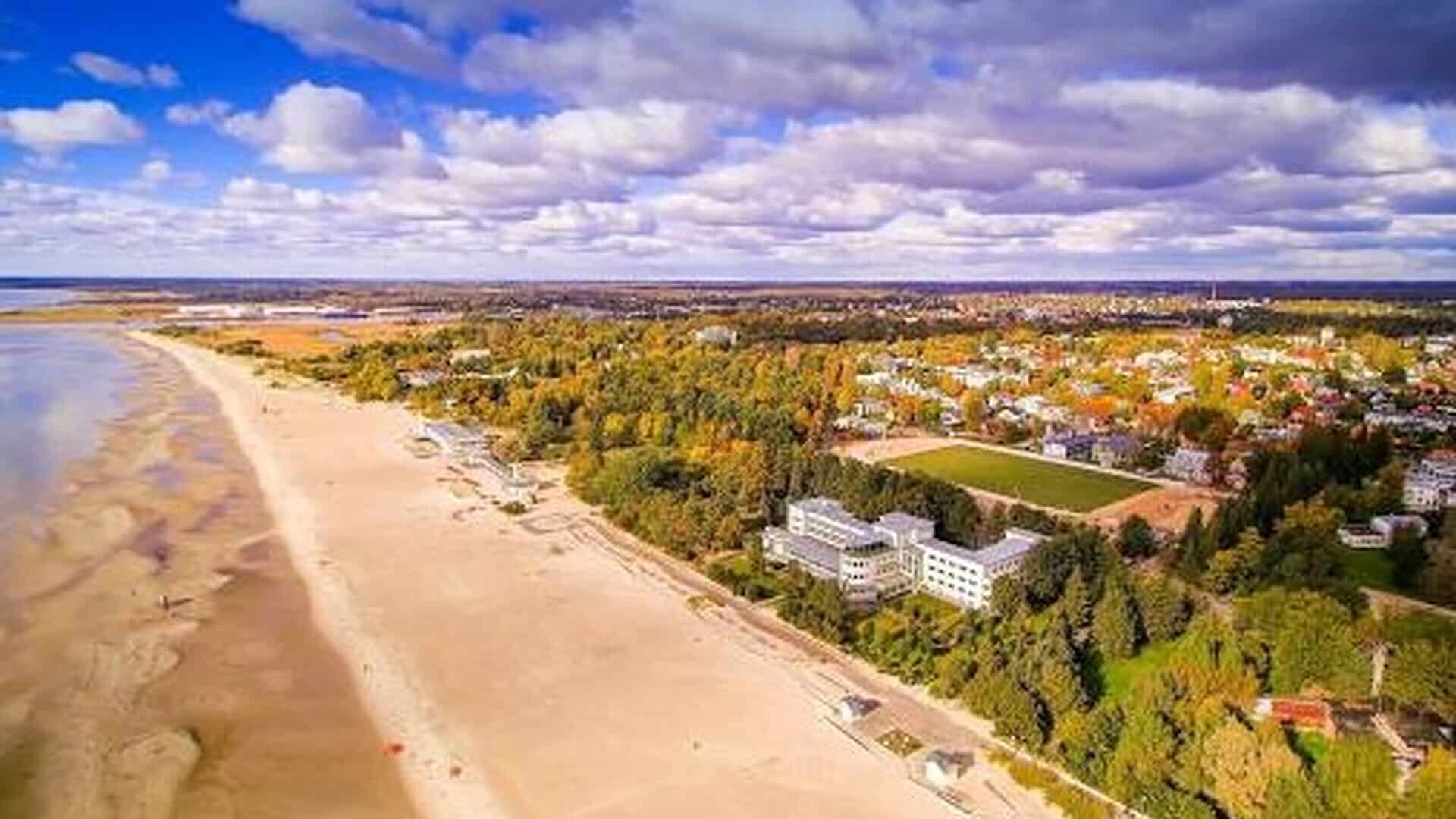
The city is famous for its sandy beaches, perfect for water sports enthusiasts, its historic center with Northern European charm and its thermal spas. This makes it an ideal place for those seeking tranquility and relaxation.
VILJANDI
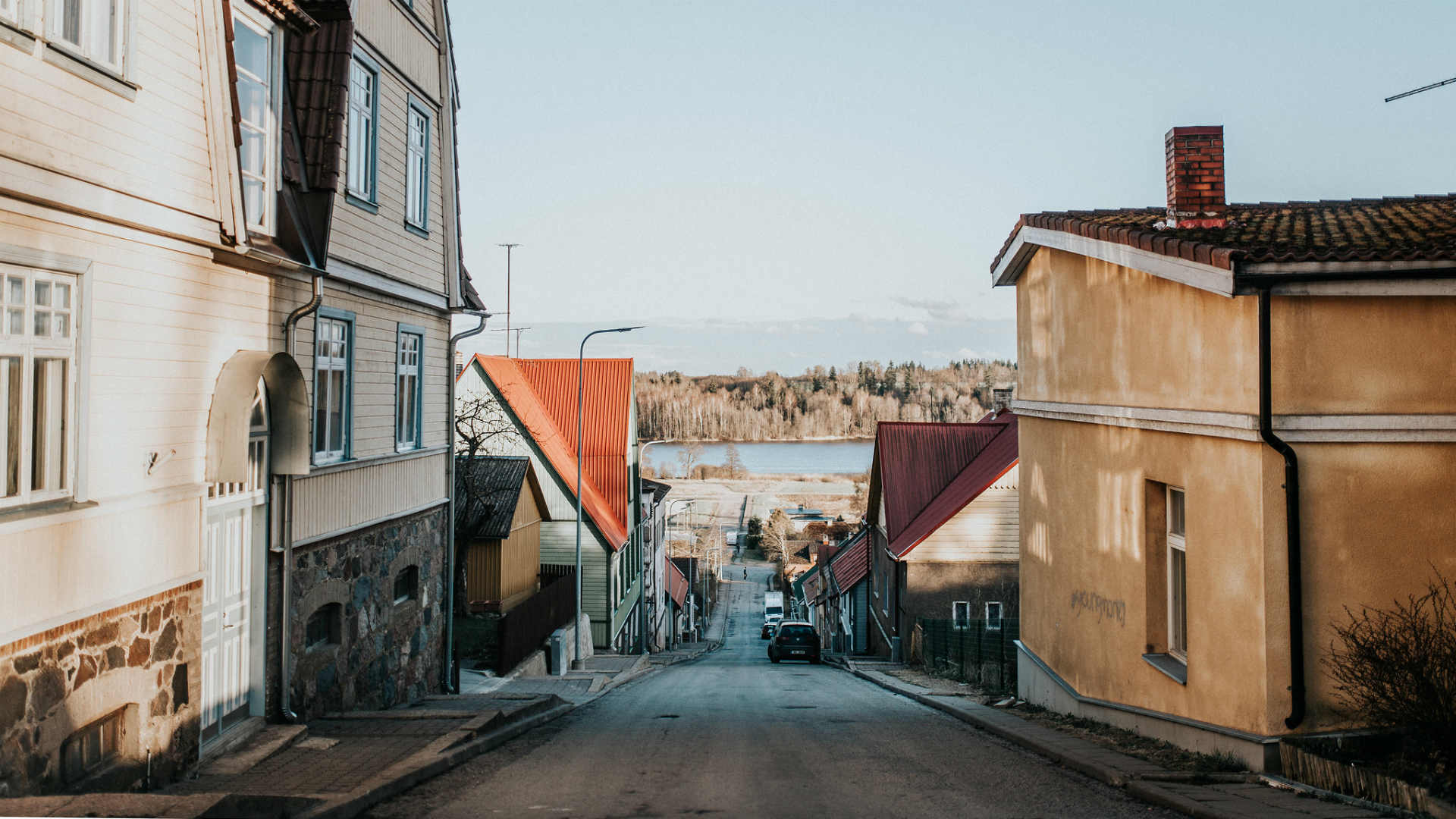
If you don’t know what to do in Viljandi, the town is famous for its Music Festival, an annual event that attracts thousands of visitors from all over the world. The festival, which is held every July, celebrates traditional Estonian and international music, transforming the town into a lively cultural center.
KURESSAARE
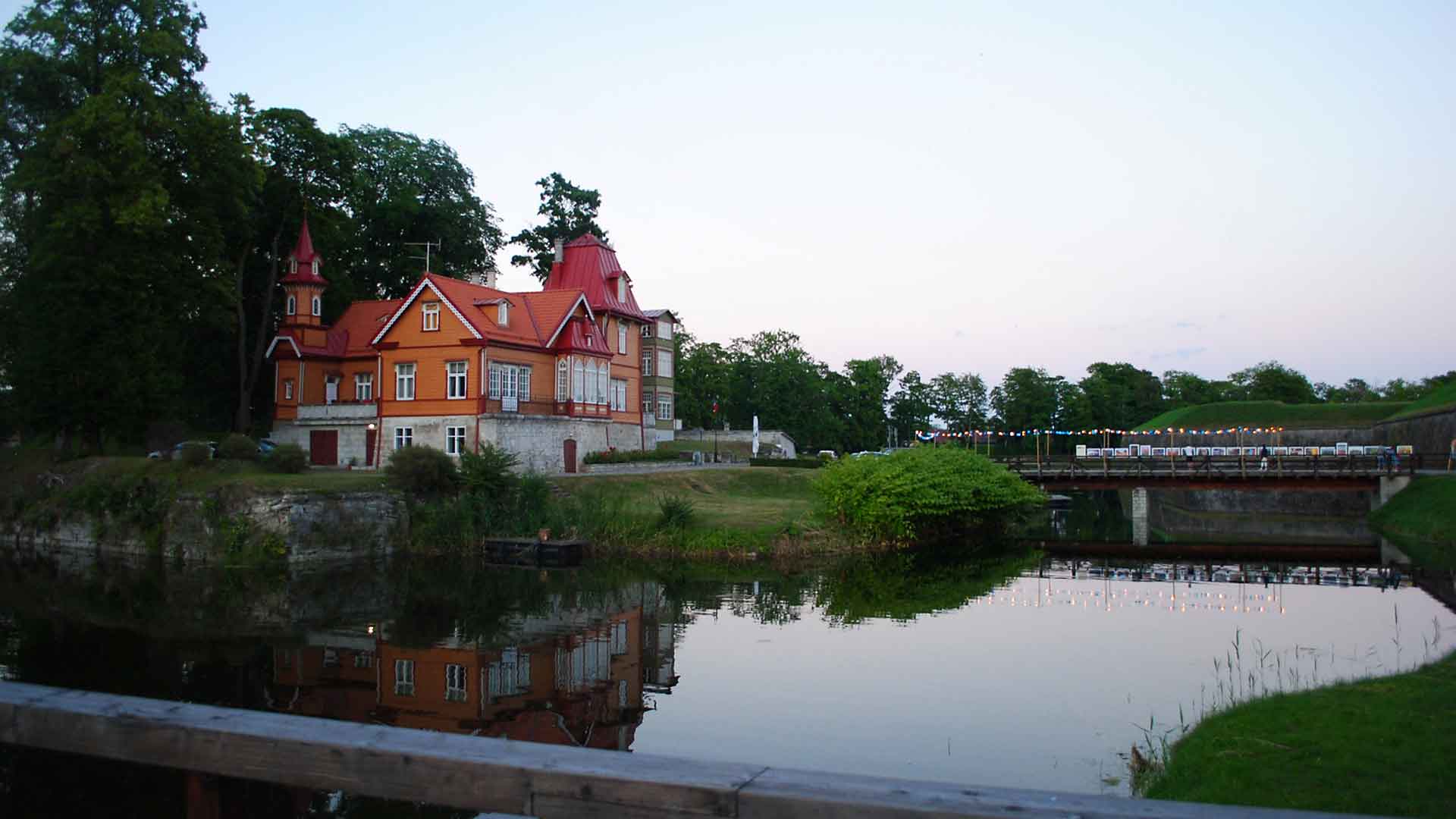
Kuressaare is a well-known tourist destination in Estonia, although it is not the country’s main tourist attraction. However, the city attracts visitors for its charming castle and its location on the coast of the island of Saaremaa.
HAAPSALU
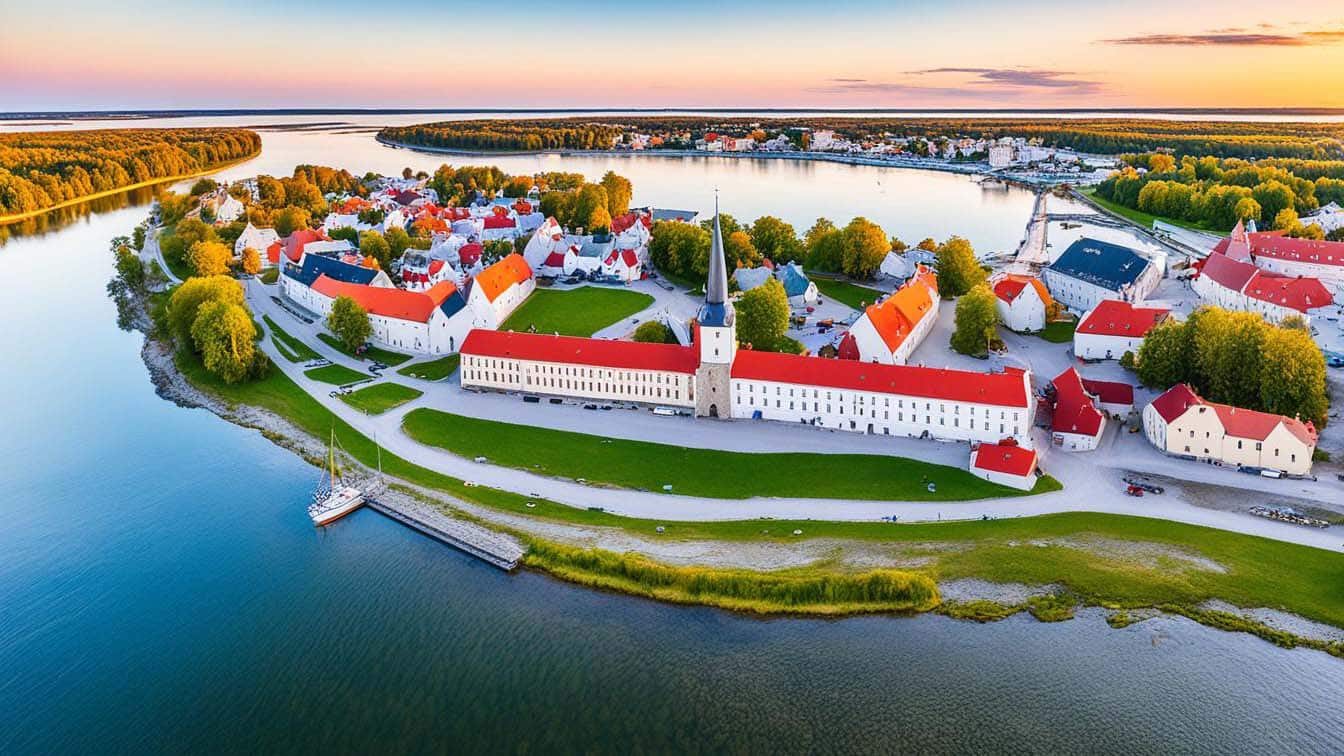
Haapsalu is a beautiful town on the west coast of Estonia, known for its peaceful atmosphere and charming cobblestone streets. This town is a fascinating tourist destination that offers a unique combination of historical heritage (the castle is stunning), natural beauty and culture. The Haapsalu Promenade offers a breathtaking views of the Baltic Sea.
INSIGHTS & BLOG
National parks and nature reserves of Estonia.
If Tallinn, the capital, is a destination with ancient charm, then outdoor Estonia is a dream for nature lovers. Distinguished by 1000 islands that make it picture-perfect, from picturesque beaches to an adventurous lifestyle, for those seeking a break from the usual boring routine, Estonia is the perfect destination, immersed in primeval forests and woods that are the ideal place for those in search of nature and the soul in its glorious splendor.
LAHEMAA NATIONAL PARK
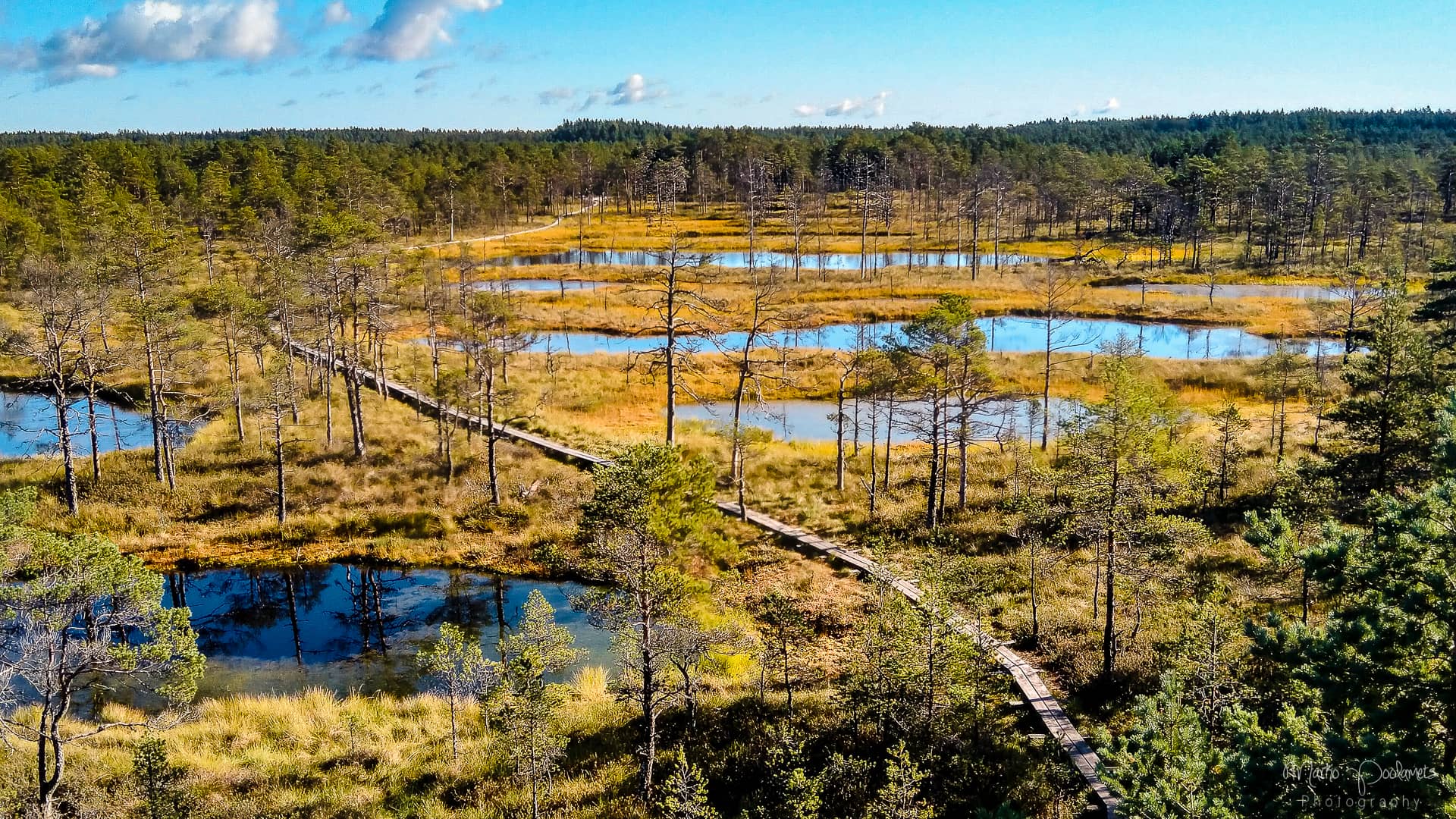
Lahemaa National Park is a natural paradise located on the northern coast of Estonia, about an hour drive from Tallinn. Founded in 1971, it is the largest national park in Estonia. Lahemaa means “Land of the Bays”, as witnessed by the many bays and beaches of the park. One of the things to see in Lahemaa National Park are the Jägala waterfalls, the highest in Estonia (50 meters). The Valgejõgi river offers many opportunities for kayaking and canoeing. The park is also a sanctuary for a large number of animal and plant species. Among the animals that can be seen are the elk, eagles, wild boars and wolves, while the marshlands and woods are home to various species of birds: Lahemaa National Park is one of the areas in Europe with the highest density of black and white storks during the summer season.
SOOMAA NATIONAL PARK
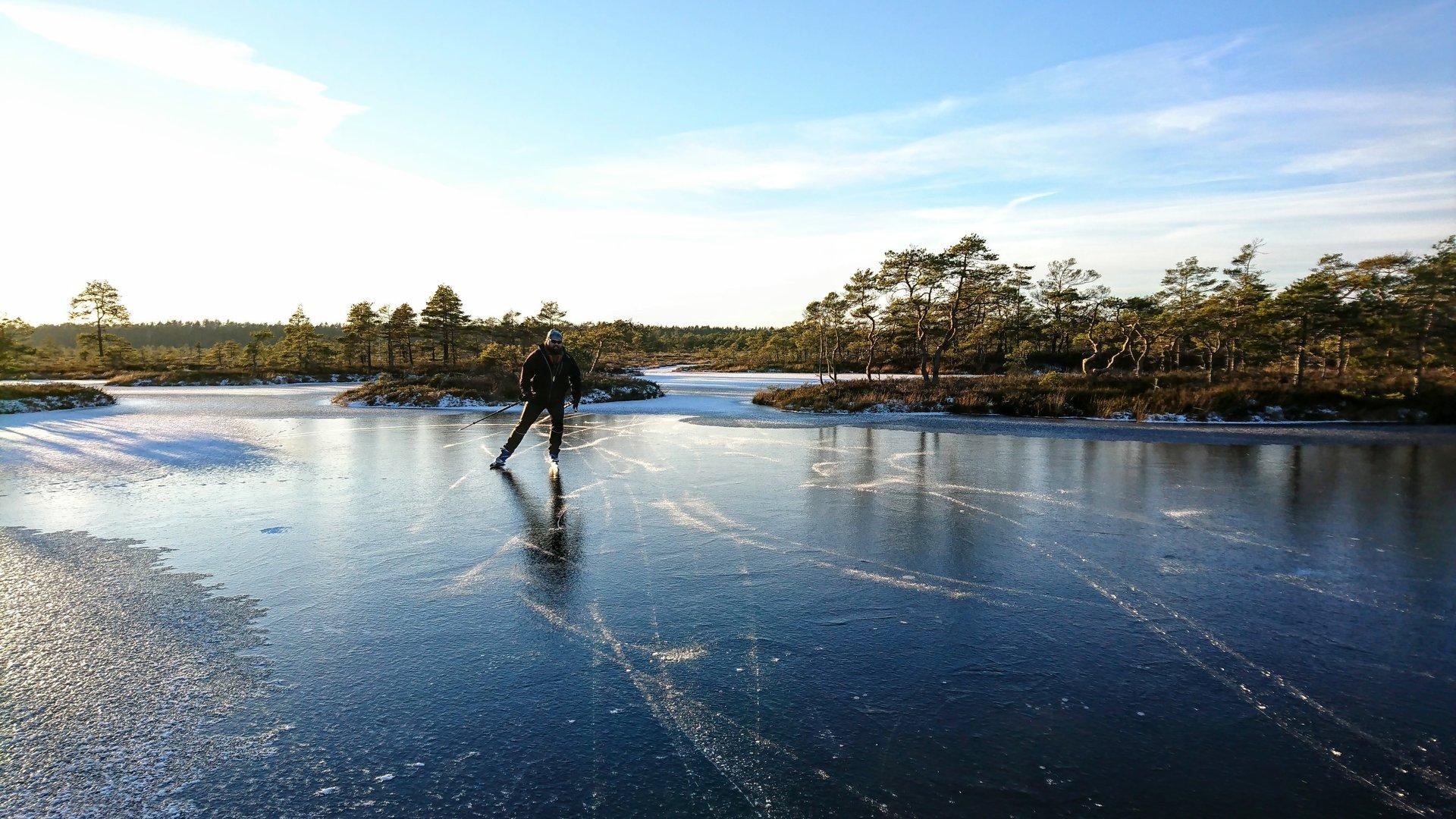
About 80% of the park is covered by peat bogs, where you’ll find unique peat landscapes, swamp forests and seasonal floodplains. Soomaa’s charm lies in its unspoiled beauty and solitude. Many visitors come here to take refuge in nature, immersing themselves in the sights and sounds of a place that has remained virtually untouched for centuries. One of the most exciting times to visit Soomaa is during what the locals call the “fifth season”. Every spring, melting snow and rain cause the rivers to overflow, flooding meadows, forests and paths. This incredible natural phenomenon transforms Soomaa into a labyrinth of waterways and the best way to explore it is by canoe. Paddling through forests and flooded fields is like entering another world, offering a peaceful and surreal experience unique to this park.
ALATAGUSE NATIONAL PARK
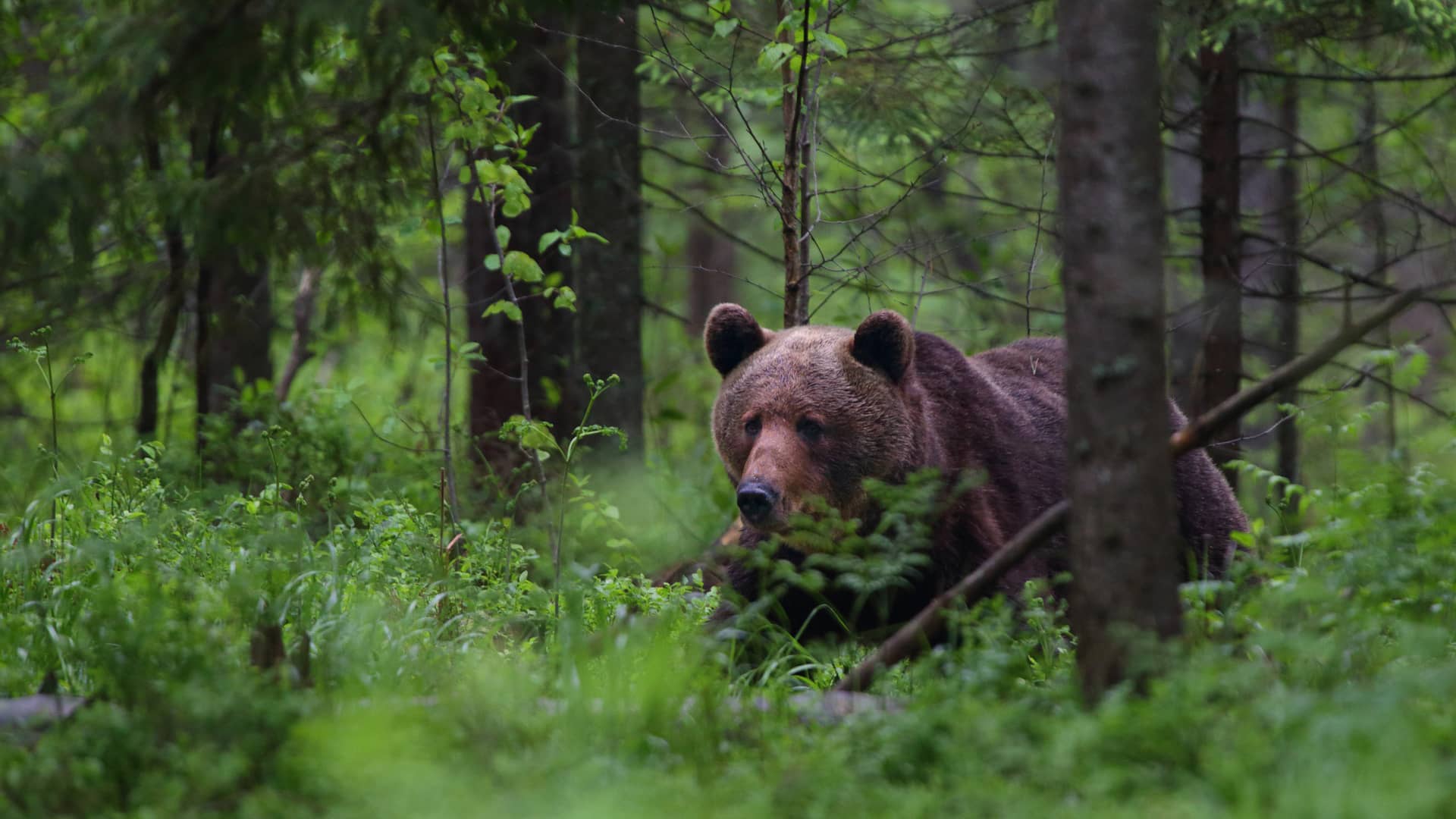
The most recent national park in Estonia, located in the north-eastern part of the country, where unspoiled nature alternates with small villages, ancient burial sites and former mining areas. This national park is known for its beautiful native forests and deep swamps, which are sometimes reminiscent of the taiga (boreal forest), and for the population of brown bears that inhabit these forests. In the fall it is one of the best places to observe bears thanks to the less dense foliage, making it easier to spot them.
VILSANDI NATIONAL PARK
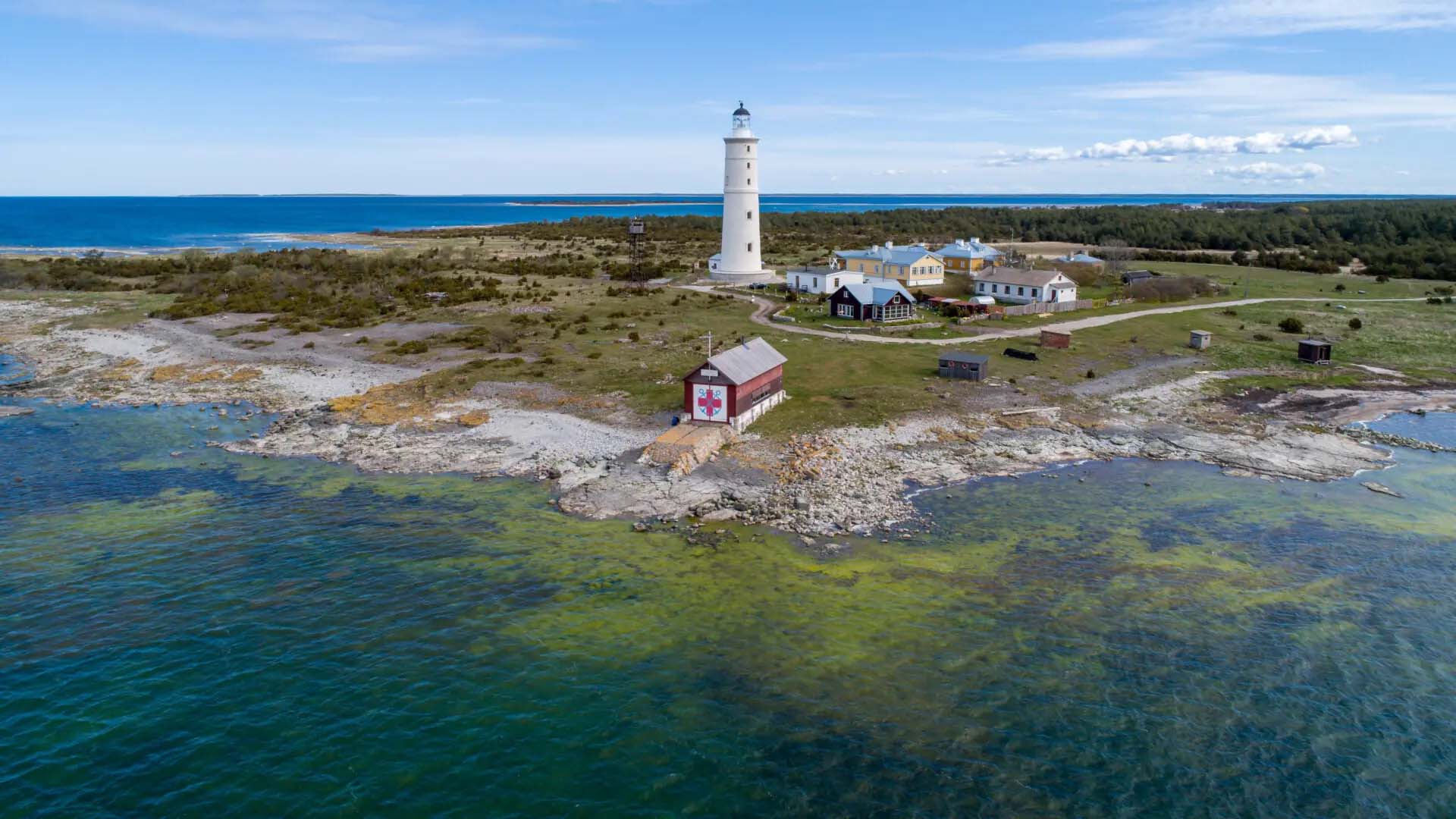
Vilsandi National Park, together with part of the island of Vilsandi, covers 100 small islets and rocks located nearby and boasting a unique flora and fauna. In fact, Vilsandi National Park was established to protect most of the island, the Harilaid peninsula and the surrounding archipelago.
Being the oldest nature reserve in the Baltic countries, the park boasts numerous species of migratory birds, about 247 including Steller’s eider, duck and barnacle goose. Vilsandi National Park also includes about 33% of plant species including orchids. It seems that this is a popular tourist destination in Estonia and here visitors like to go canoeing through the many small islands with enchanting sea views.
INSIGHTS & BLOG
Wildlife of Estonia
The fauna of Estonia includes a large number of large European mammals, including roe deer and moose. Estonia also has protection programs for 10 rare species of amphibians and a number of large birds of prey, such as the golden eagle (250 pairs), the white-tailed eagle, the spotted eagle and the eagle owl, as well as the rare black stork. One of the few, if not the only animal that can be admired in the Estonian forest is the European flying squirrel.
Among the natural spectacles not to be missed is the great migration that begins in spring when the ice melts and culminates between April and May, when about 50 million birds follow the eastern migratory route across the country.
BROWN BEAR

The bear population is quite large in almost all of Estonia. Currently there are more than 900 bears in Estonia and the number is constantly growing, the highest concentration being in the Viru region and generally throughout the central-eastern part of the country. The Alutaguse National Park is probably the best area of Estonia for bear watching. Best season for witnessing bears is between April and July when they wake up from hibernation, and also Autumn when bears store the ripe berries and can be spotted easily. In spring and early summers, visitors can witness mother bear with her newborn cubs.
FLYING SQUIRREL
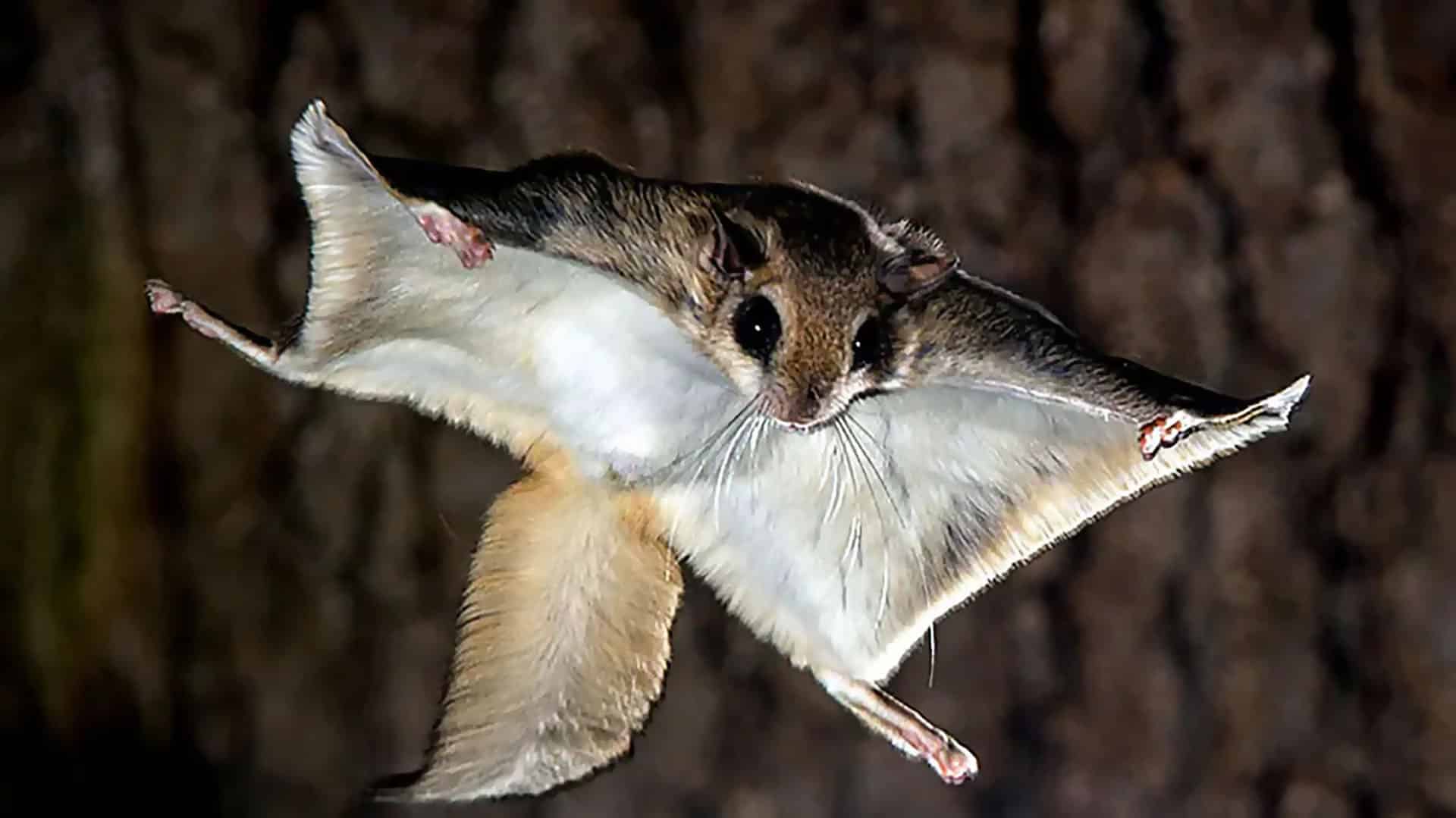
The Siberian flying squirrel is a Nordic animal. In Western Europe it is only found in Finland, Estonia, Latvia and in the forests of northern Russia. It is a nocturnal animal and only leaves its shelter at the end of which it spends the daylight hours when it is completely dark. June is the best month to spot it, thank to the nearly endless days and white nights. The best area in Estonia where you can find the flying squirrel is the Alutaguse National Park.
LYNX
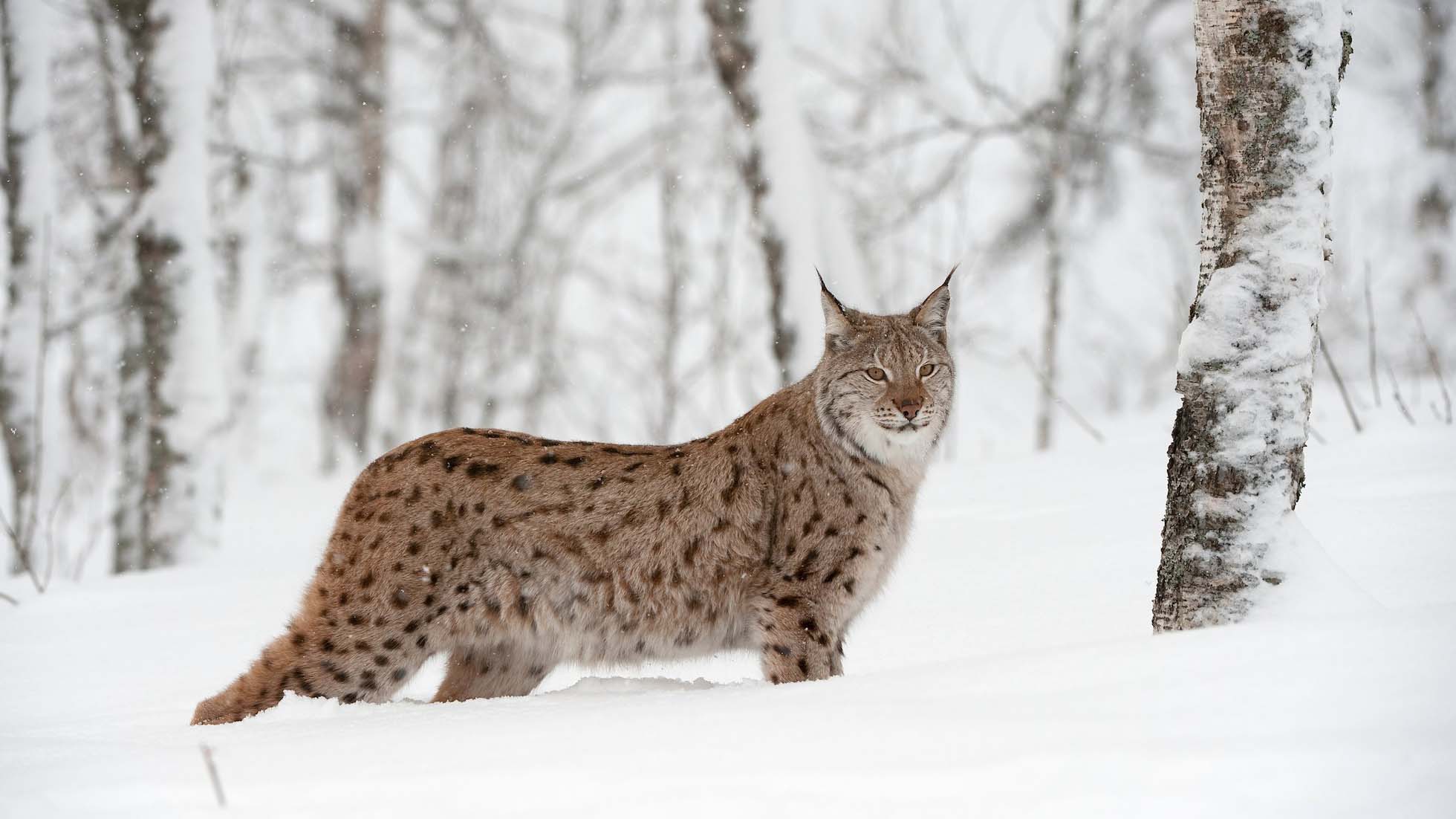
The European is one of the largest predators in the forests of Europe and Siberia. This feline once lived throughout Europe, before being hunted to extinction. Right now, an estimated 550-600 Eurasian Lynx inhabit the forests of Estonia. Lahemaa National Park in the northeastern part of the country is one of the best locations to spot the lynx, especially in March (mating season) and in late autumn.
BIRD MIGRATION
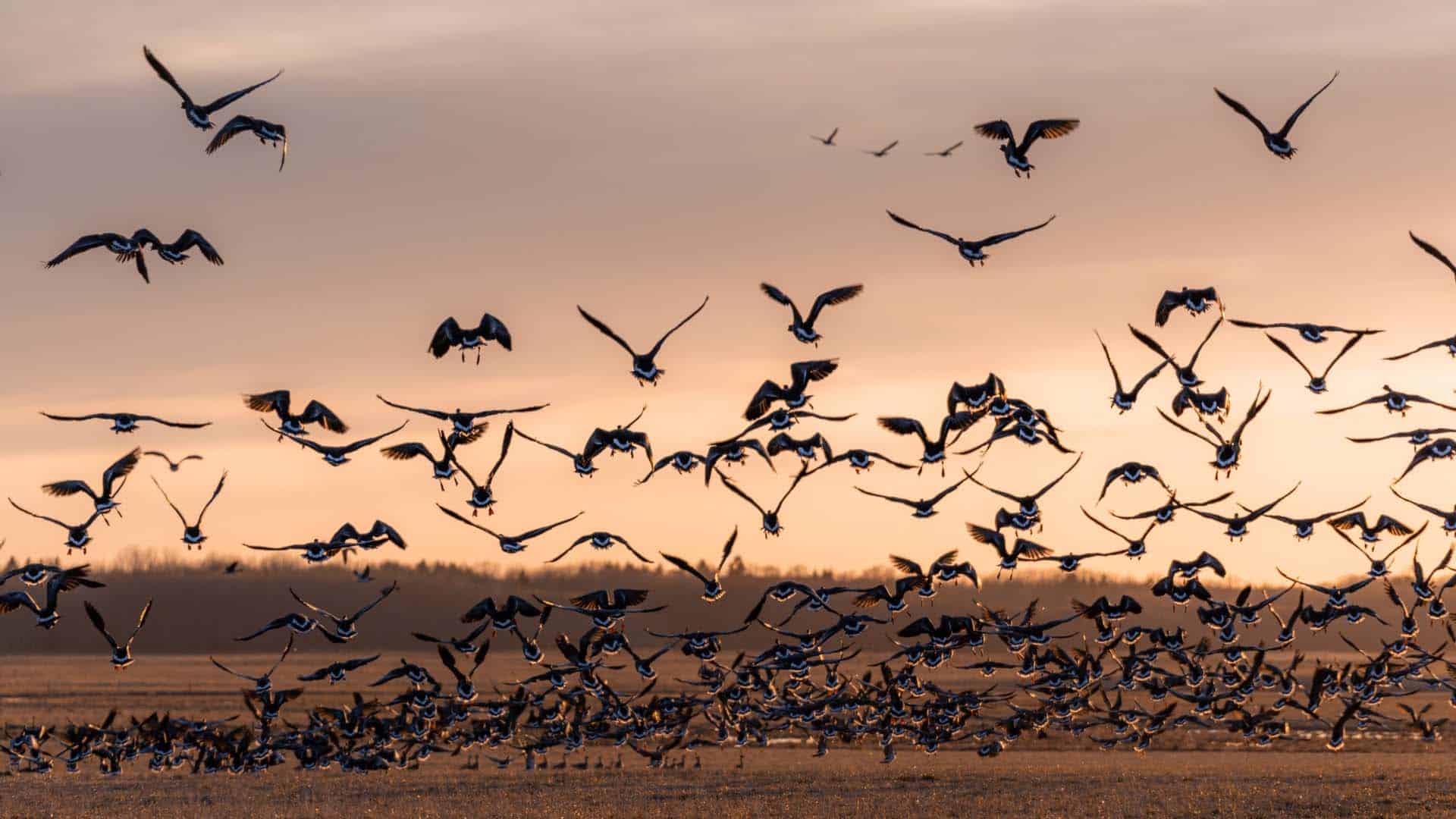
Spring and early autumn are the best times to observe the great migration of various species of birds. A truly spectacular event that attracts birdwatchers and photographers from all over Europe.
ELK (MOOSE)
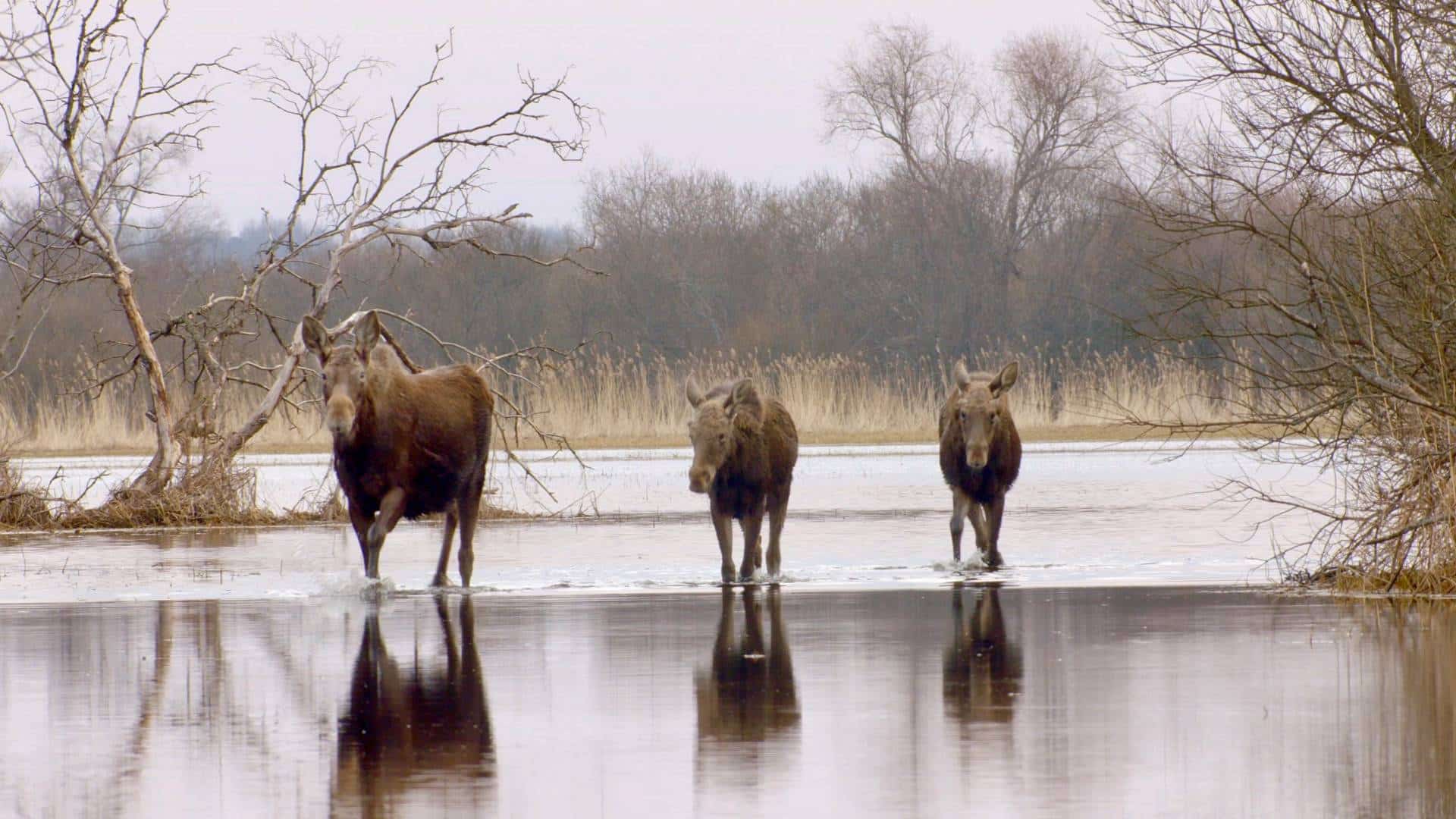
The moose is the largest extant deer. Male moose have an average weight of over 550 kg and females often exceed 400 kg. Currently the elk population in Estonia is excellent, with an estimated population of about 60.000, of which between 4.000 and 6.000 are hunted each year. Haapsalu area is well known as a top Moose watching area in Estonia, from August to April. In the autumn most of the moose safaris take place in the Matsalu National Park. In the winter, in the Leidissoo Nature Reserve.
GREY WOLF
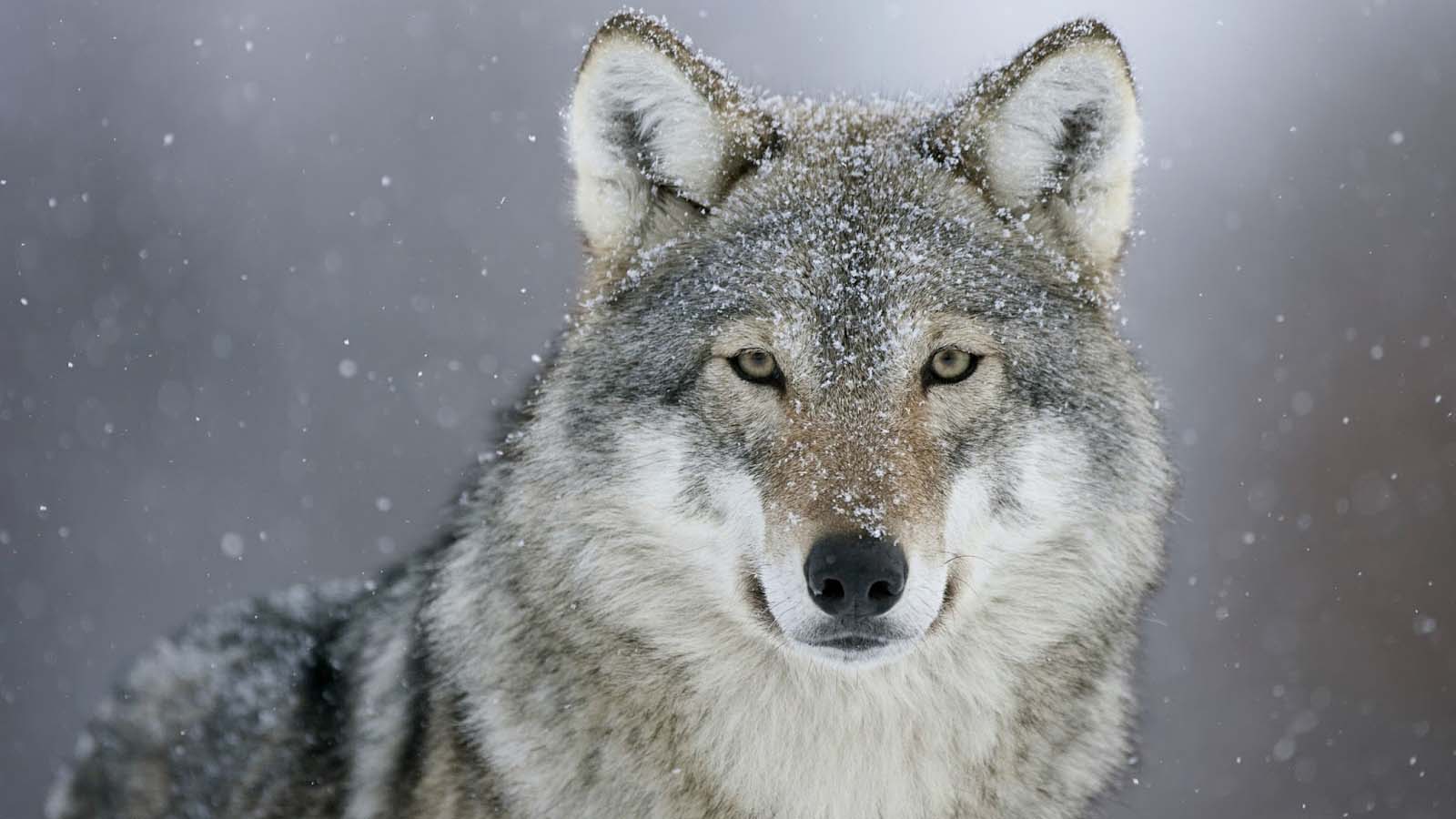
The Eurasian gray wolf is the largest of the gray wolves of the Old World. Many Eurasian wolf populations are forced to feed predominantly on livestock and waste in areas occupied by humans, although wild ungulates such as moose, red deer, roe deer, and wild boar are still important prey. In Estonia the wolf has solidly settled in the western part of the country.
Experiences and activities to do in Estonia.
Discover medioeval towns, experience the untouched wilderness of the least populated country of Europe, hop on and off amongst thousand islands.
BEAR WATCHING
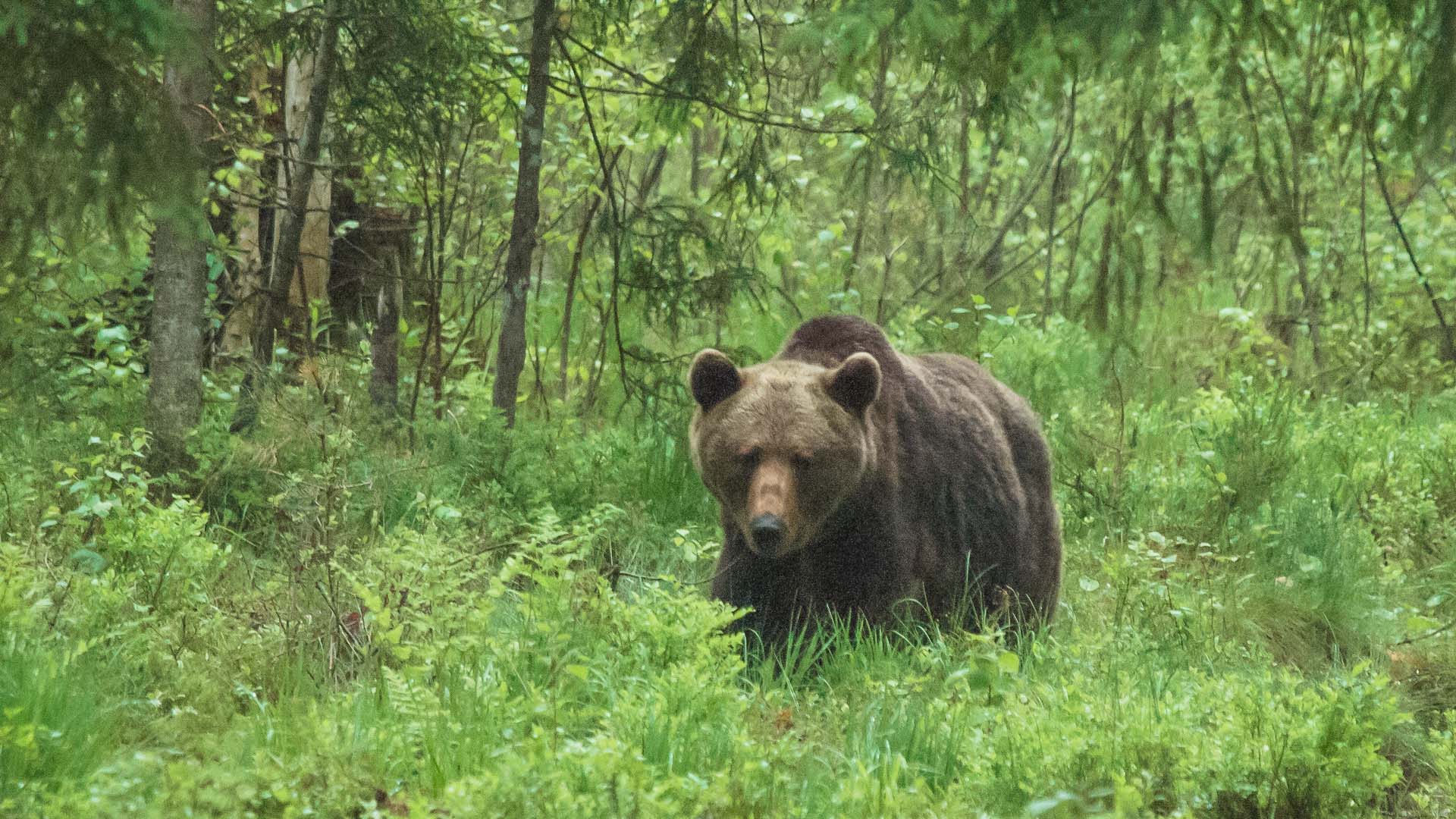
Estonia is one the best destinations in Europe for bear watching. But there’s much more wildlife to look out for, like moose, wolf, lynx and a prolific birdlife in the summer. Bears are better spotted from dedicated hides in the forest.
KAYAKING & CANOEING
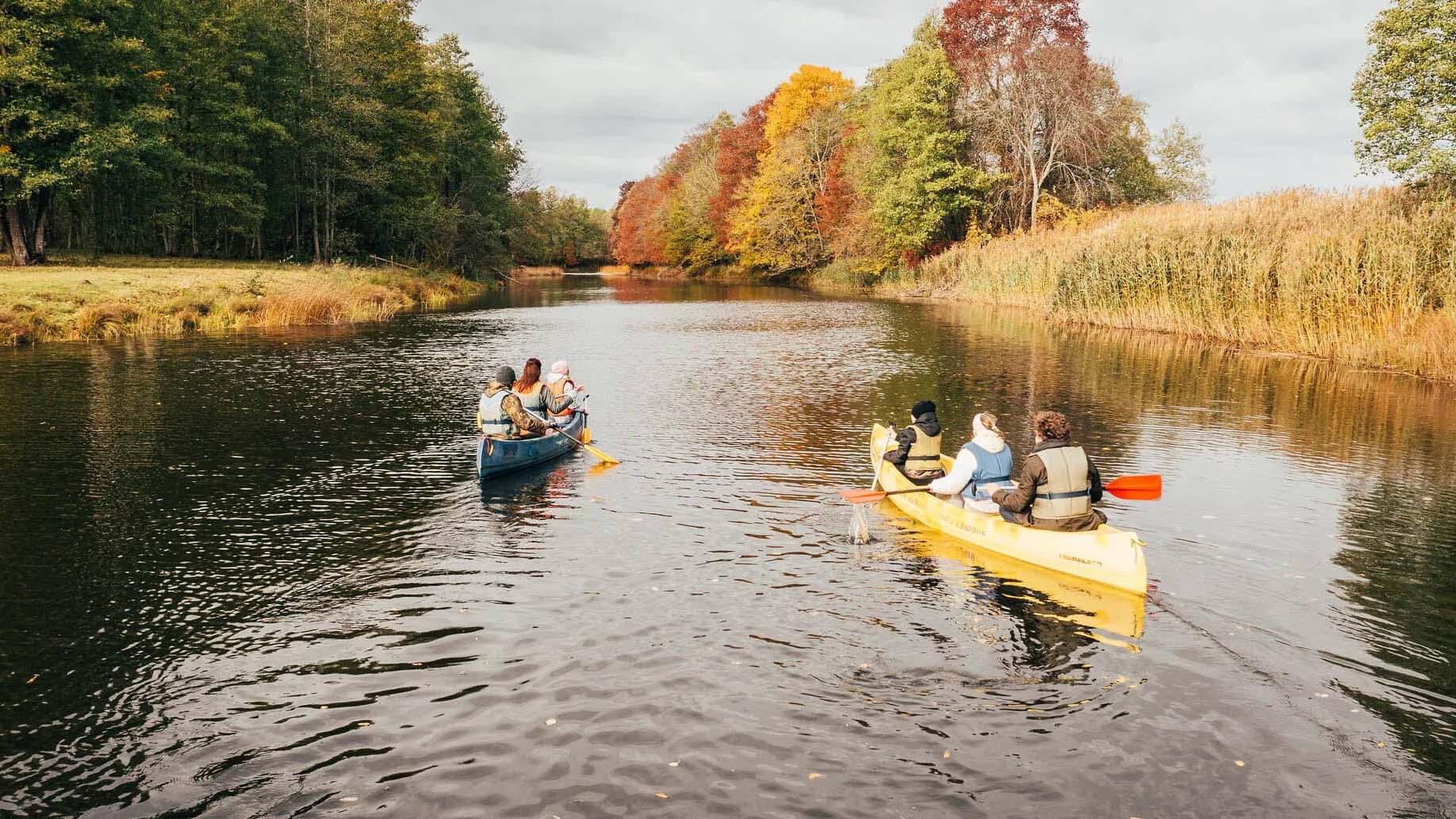
Soomaa (“land of the swamps”) is Estonia’s most primordial nature, a wild landscape of peat bogs and riparian forests where brown bears, wolves, lynxes and moose hide. Five rivers wind through this “Estonian Amazon” and to get around the locals traditionally use the haabjas, a hand-carved canoe.
BOG WALKING
For centuries, peat bogs had a serious problem with their reputation in Estonia. They were scary places where criminals hid and evil spirits caused travelers to get lost. This attitude has completely changed. Today, peat bogs are the most popular landscapes in the country, where Estonians go for Sunday family walks. The Viru and Riisa peat bogs (in the Lahemaa and Soomaa national parks) are the most popular.
UNDERSTANDING ESTONIA'S SOVIET PAST
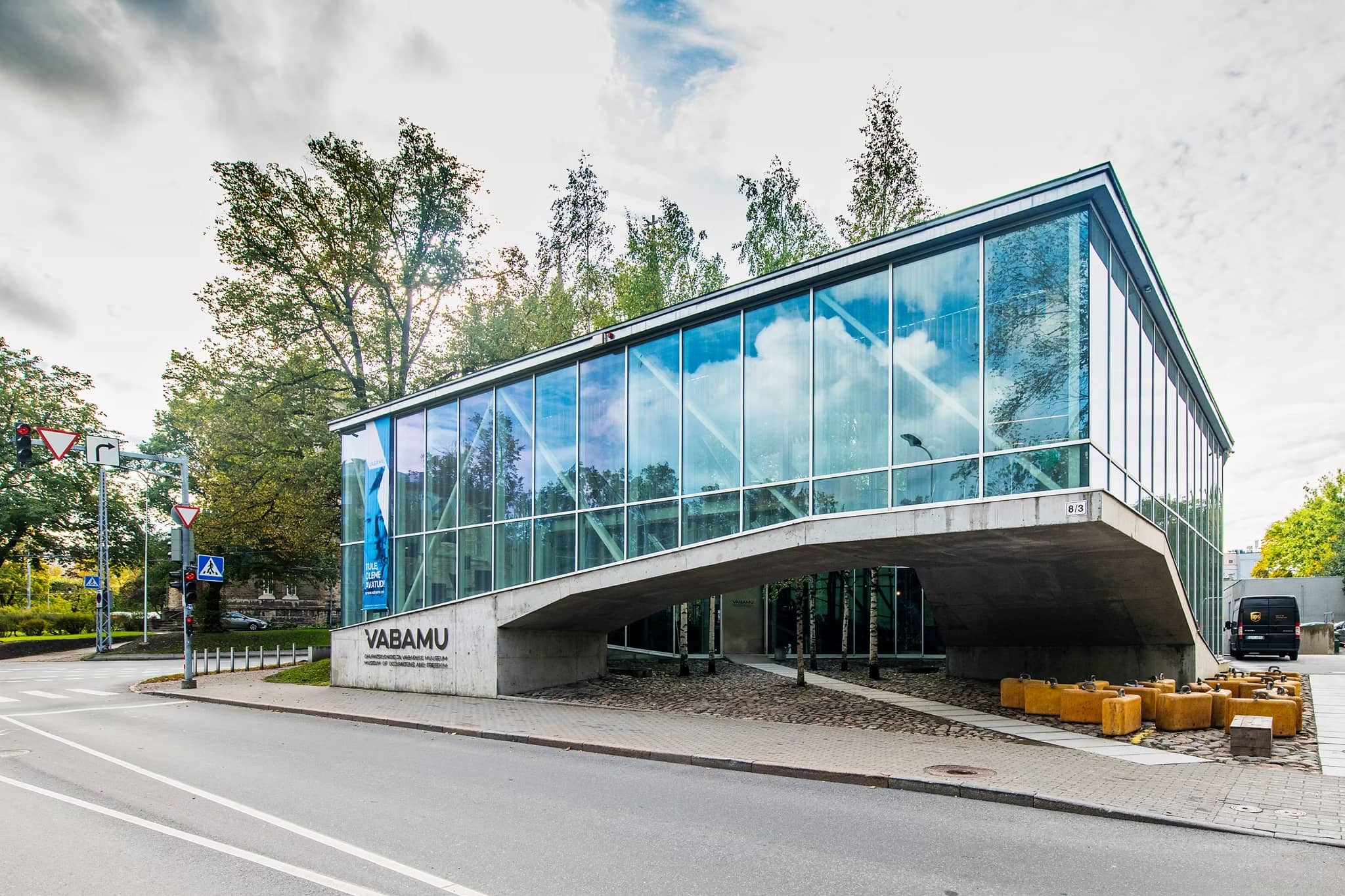
As much as Estonians want to forget this painful chapter in their history, the remnants of the Soviet occupation still linger. The Museum of Occupations and Freedom at Vabamu, the KGB prison cells and Hotel Viru, where secret agents eavesdropped on guests from the hidden 23rd floor, are the best places to learn about this period.
APPROFONDIMENTI
Weather conditions and seasonality in Estonia
The climate in Estonia is sub-continental and, more generally, temperate and cold (with cold winters and relatively warm summers).
All in all, the Estonian climate is less varied than that of neighboring countries such as Finland and Sweden: in fact, the average temperature isotherms of the coldest month (usually February) are everywhere between -3 and -7 °C, with very short days in winter and the sky remaining uniformly gray for long periods.
WEATHER AND CLIMATE IN ESTONIA
WINTER
The winter months in Estonia are very cold: the temperature remains below zero for long periods, even during the day. Average temperatures in January and February range from -1 °C on the coasts of the two main islands (Hiumaa, Saaremaa), to -3.5 °C in Tallinn and on the northern coast, to -4 °C on the coasts of the Gulf of Riga (see Parnu), and down to -5 °C in the inland areas of the northeast.
Atlantic currents, which sometimes manage to penetrate southern Scandinavia and central Europe, have difficulty reaching Estonia. However, Atlantic disturbances arrive quite often, bringing frequent snowfalls, more easily than rain.
December is the month when the sun is lowest on the horizon and the days are shortest, while the coldest month is February, as is often the case in Nordic countries.
SPRING
In springtime the days become longer and longer and the temperature slowly increases; generally the thaw happens at the beginning of April, but between the end of April and the beginning of May there can be sudden cold spells with snow showers. April is a month of contrasts, so it can go from frost to the first warm spells, more likely in the second half of the month. From mid-May, the temperature generally becomes acceptable.
SUMMER
Summer in Estonia is a pleasant season, as maximum temperatures fluctuate around 20/22 degrees, which means that it is not hot, but ideal for excursions and outdoor activities. Nights are cool, with minimum temperatures around 12/13 degrees (reaching 15 °C on the west coast).
It rains quite a lot in summer: on average every three days. In inland areas afternoon thunderstorms are possible.
Atlantic disturbances can also bring cool and rainy days, even in the middle of summer. On the other hand, warm air masses coming from the southeast can bring some hot days, and in these situations, which however generally don’t last long, the temperature can even reach 34/35 °C in inland areas.
AUTUMN
The autumn is a gray and rainy season, and while in September it still has acceptable temperatures, it quickly becomes colder, so much so that the first snowfalls are possible as early as the end of October. Compared to spring, autumn is darker because the days are much shorter, a difference that occurs everywhere, but is more noticeable in the Nordic countries.
POPULAR ROUTES IN ESTONIA
Trip ideas for the discerning traveller.
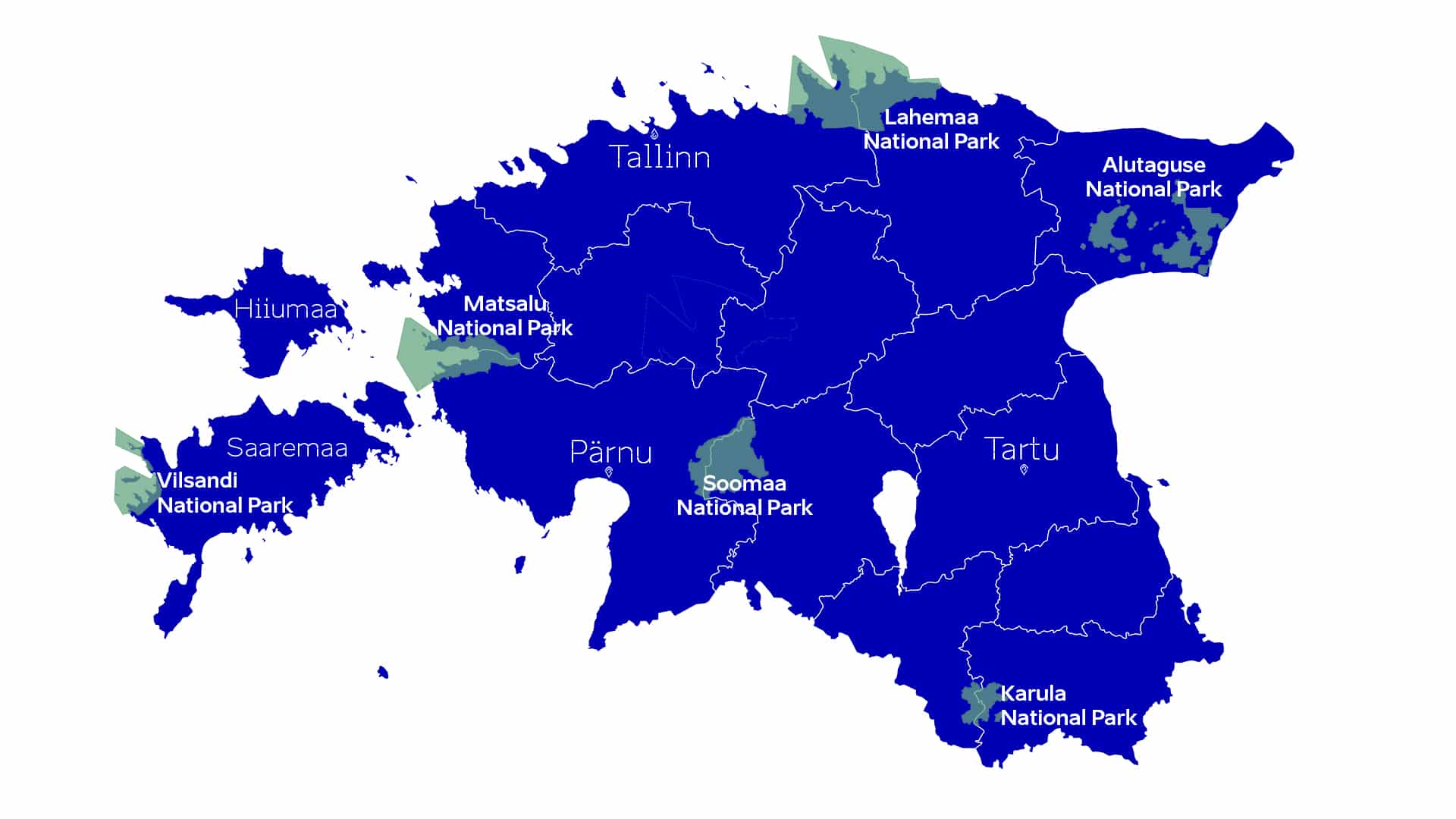
TALLINN EXPLORER - 3 days
Discover one of the most beautiful cities of northern Europe.
Locations, highlights, itinerary summary
Destinations: Tallinn, Kadriorg Park, Pirita, Tallinn’s seaside.
Highlights: fascinating old town, coastal vibe and great food experience.
Day 1: discover Tallinn’s medieval charm and Bohemian vibes in Kalamaja. Tips: get a local guide for touring Kalamaja, one of the oldest districts in Tallinn. Situated just north of the picturesque Old Town, this area used to be home to fishermen.
Day 2: the Kadriorg Palace is home to the headquarters of the Art Museum of Estonia. Visit to Pirita area amd the Maarjamäe Palace, headquarters of the Estonian History Museum, which takes you on a journey through the 100 years of the Republic of Estonia.
Day 3: visit one of the best maritime museums in Europe in the Seaplane Harbour. Understand the past by visiting the Patarei Memorial Museum for Victims of Communism, the world’s first comprehensive museum on communist crimes.
WILDLIFE OF ESTONIA - 8 days
Brown Bears, Elks, Bird Migration and Ringed Seals in Estonia.
Locations, highlights, itinerary summary
Destinations: Matsalu National Park, Baltic Sea, Alutaguse National Park, Lahema National Park, Tallinn.
Highlights: birdwatching, bear watching, wildlife photography, seal safari in the Baltic Sea, medieval Tallinn.
Overview: After the summer has passed, Estonian birds and mammals have become active again. The sight of hundreds or even thousands of cranes and geese gathered on the fields or flying overhead is not uncommon. Near the sea, it’s possible to observe one of the most spectacular arctic waterfowl migrations in Europe. Overwintering birds, such as woodpeckers, owls, and forest grouse, become more active and visible again. Not to mention, Estonia has one of the best locations to observe a strong visible passerine migration in Matsalu National Park, where morning skies are filled with hundreds of Long-tailed Tits fighting the wind together with various finches, tits, thrushes, and Common Jays. Besides birds, Estonia is also well known for its mammals, who similarly, have become more active – It’s the rutting time for Elk, who gather on vast meadows, young wolves are learning how to hunt and howl and Brown Bears and Raccoon Dogs are trying to fatten up for the forthcoming winter. This tour is a combination of birding and mammal-watching.
TO KNOW BEFORE TO GO
Capital: TALLINN (461,000 inhabitants)
Population: 1,369,285 (2025 estimate)
Surface area: 45,339 sq. km
Time zone: +1 hour compared to Italy (GMT+2)
Languages: Widespread among the population. Estonian (official 84.86%); Russian 42.96%; English 23.4%; Finnish 12.42% ; German 9.96%.
Religion: mainly Orthodox (16.2%), Lutheran (9.9%), other Christian denominations including Catholics, Methodists, Seventh-day Adventists and Pentecostals (2.2%), other (0.9%), none 54.1%
Currency: EURO, since January 1, 2011
Country code for calls abroad: 00 372
Telephone services: the cellular network is active in the country and it is possible to buy SIM cards from a number of different operators. As it is an EU country, it is possible to use your Italian SIM card, according to the conditions of your telephone operator, within the so-called European roaming.
Climate: Very harsh winters influenced by Arctic-continental air masses with frequent and heavy snowfalls and ice formation. Summers are generally short and rainy with average temperatures around 20°C.
DOCUMENTS
Estonia is part of the EU and adheres to the Schengen Agreement. Therefore, European citizens do not need an entry visa.
GETTING THERE
The flights from Oslo and Stockholm to Tallinn are all under two hours. You can fly from Helsinki to Tallinn in 20 minutes, and from Helsinki to Tartu in a little less than an hour. For more info about flight to Estonia
From Tallinn Airport, you can also catch domestic flights to Kuressaare (the capital of Saaremaa Island), Tartu, and Kärdla (a town on the island of Hiiumaa).
Please check Skyscanner to see which airlines can take you to Estonia and what tickets would cost.
ROAD NETWORK
The road network covers the whole of Estonia. The main roads are of good quality, but the secondary roads are below Western European standards. There are no toll highways. Only some sections of the road network have four lanes. The police authorities have zero tolerance for speeding: as a result, fines are common. The rail network is quite limited, although the main lines are reasonably comfortable.
The Estonian Ministry of Foreign Affairs advises against all travel to the Russian Federation, due to the possible closure of land border crossings with the country, which could happen even at short notice. Since February 1, 2024, the Narva border crossing has been closed to motor vehicles, while it remains – for the time being – open to pedestrians from 7:00 a.m. to 11:00 p.m.
BOATS AND FERRIES
Regular ferries run between Tallinn, Helsinki, and Stockholm, and landing at Tallinn Airport places you right in the middle of the city.
SAFETY
The security situation in the country has remained good so far.
HEALTH
The public health facilities distributed throughout the territory have standards comparable to the EU average. As an EU country, citizens of the European Union have free access to medical care in case of emergency, except for the payment of a “ticket”.

